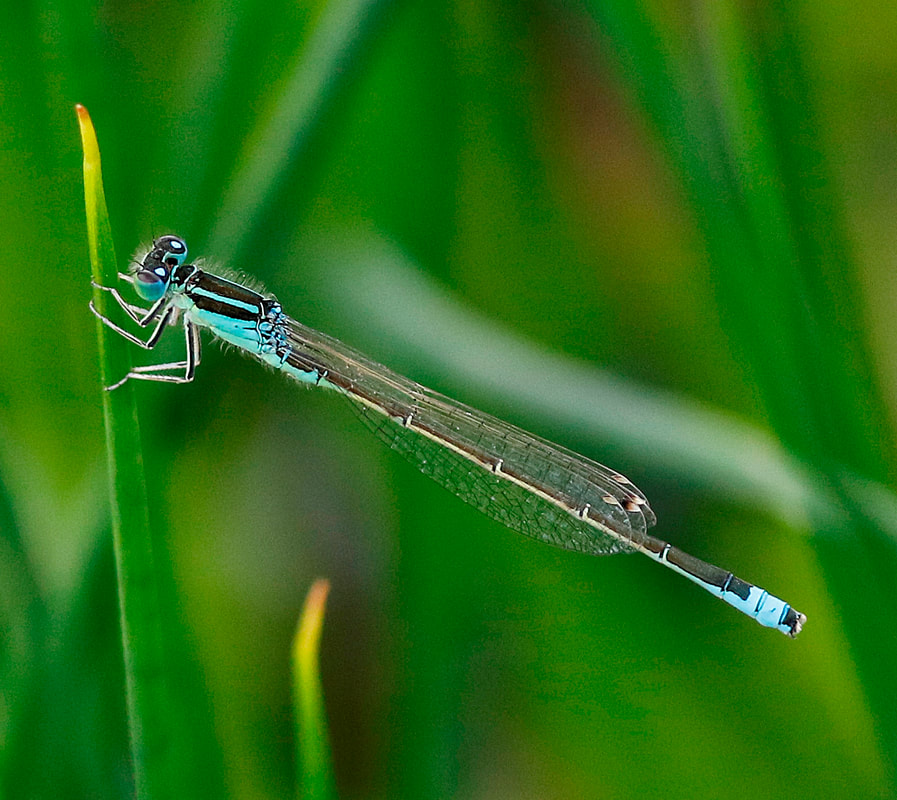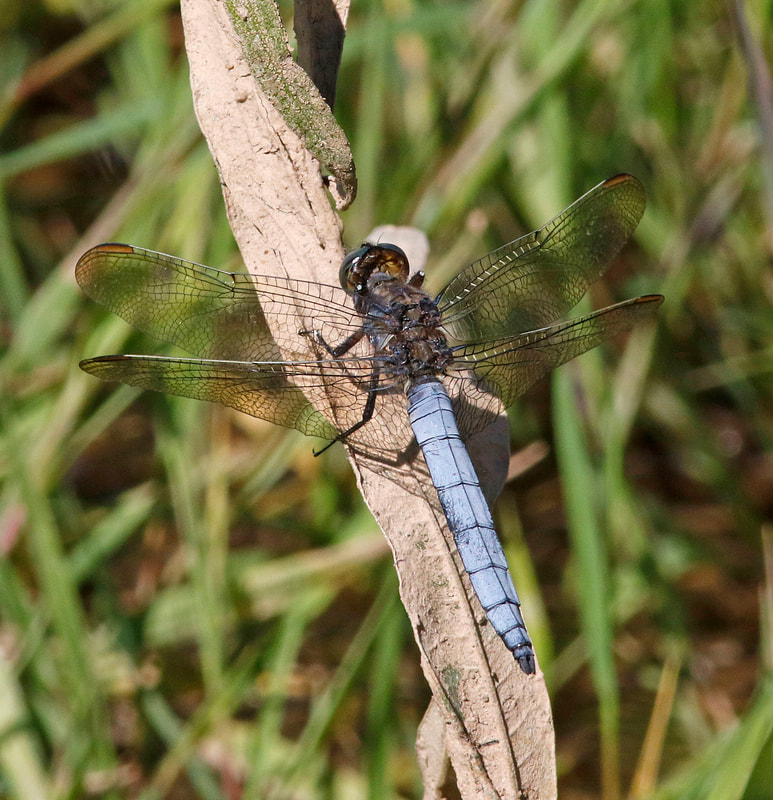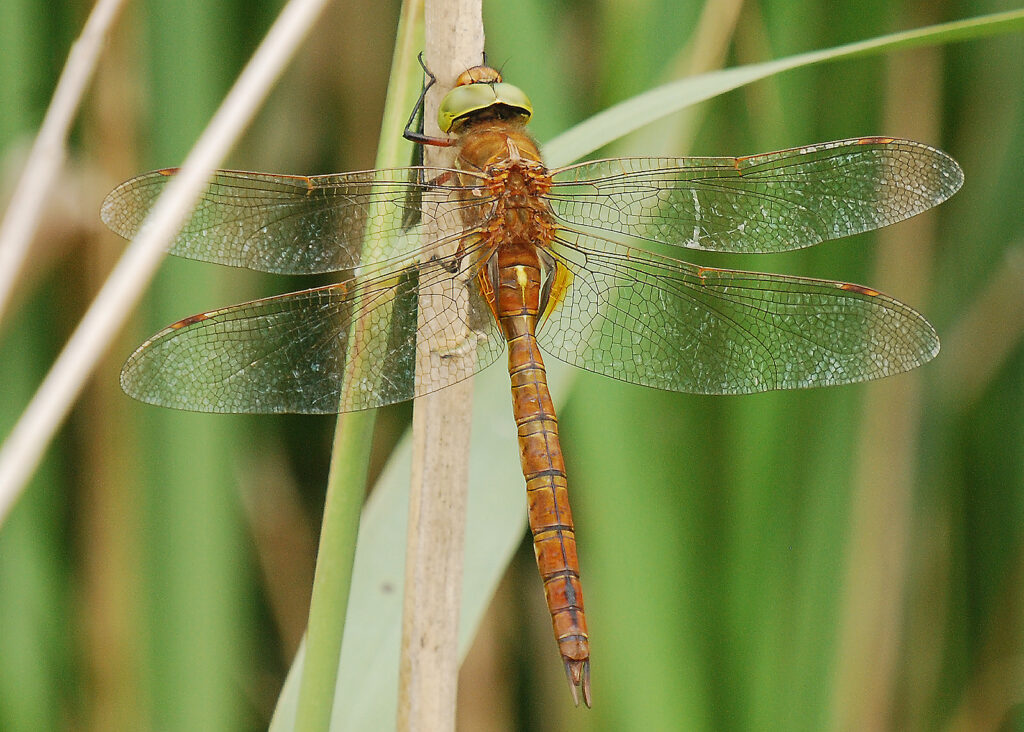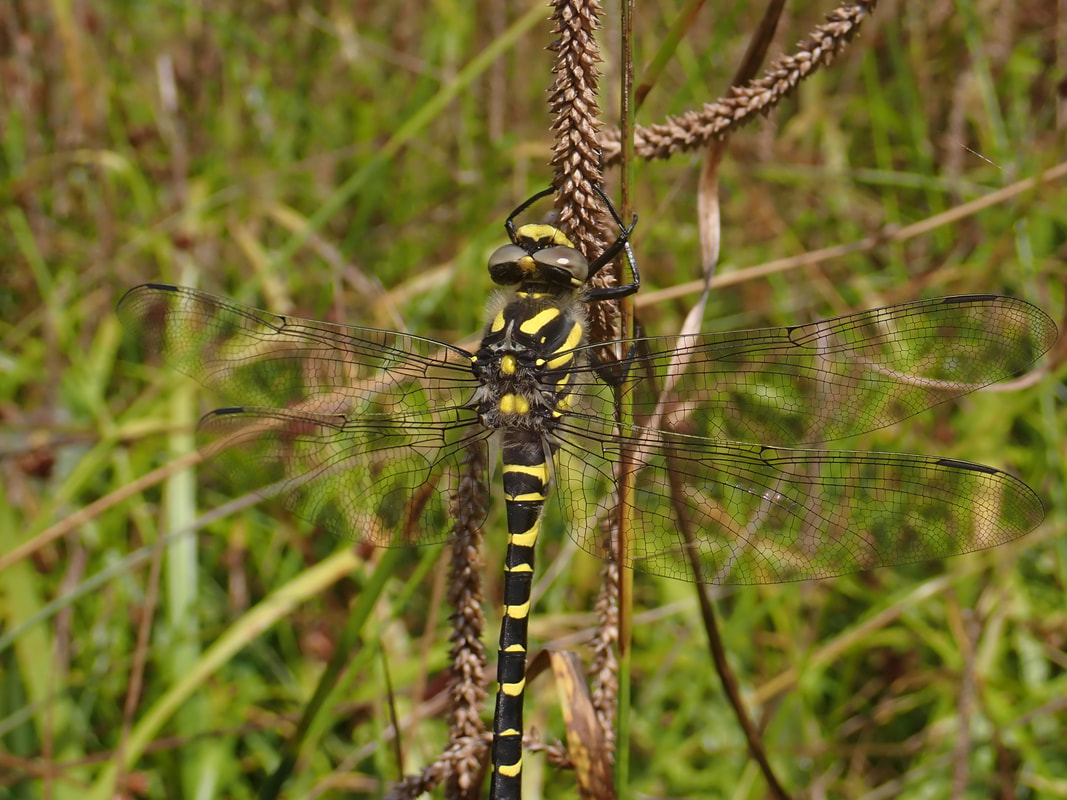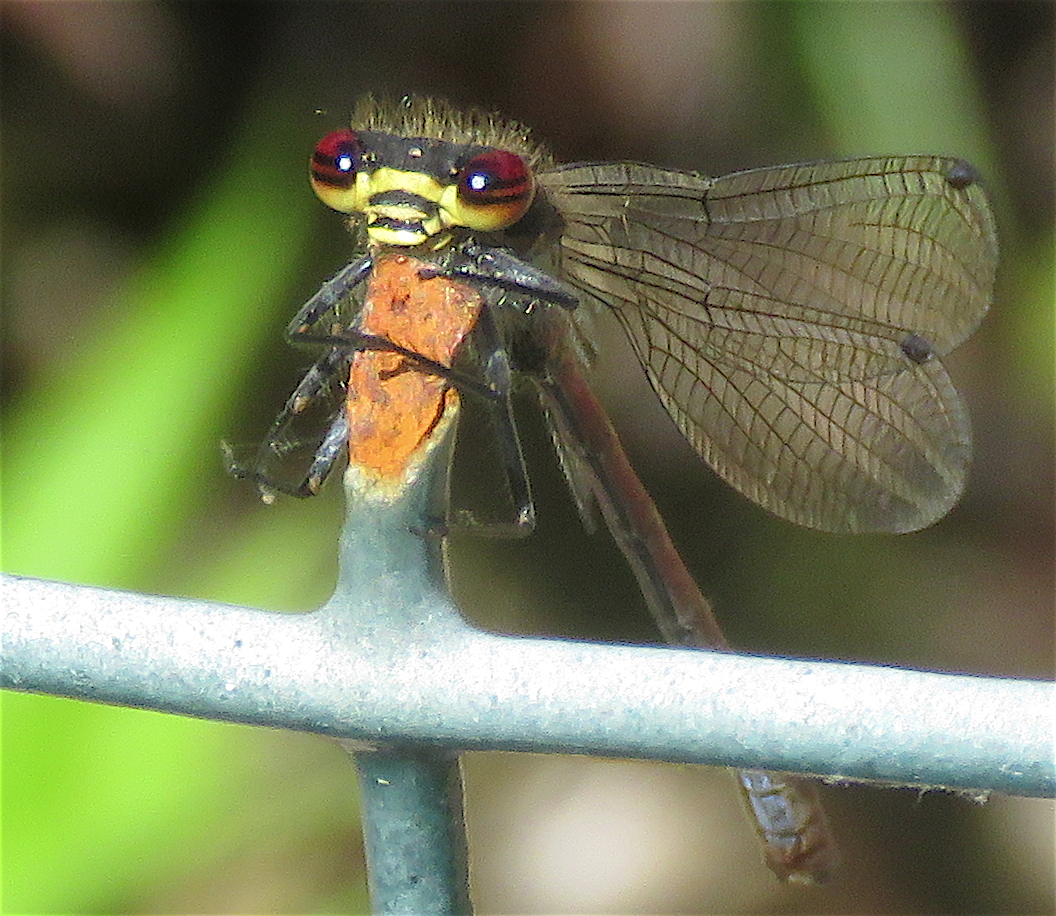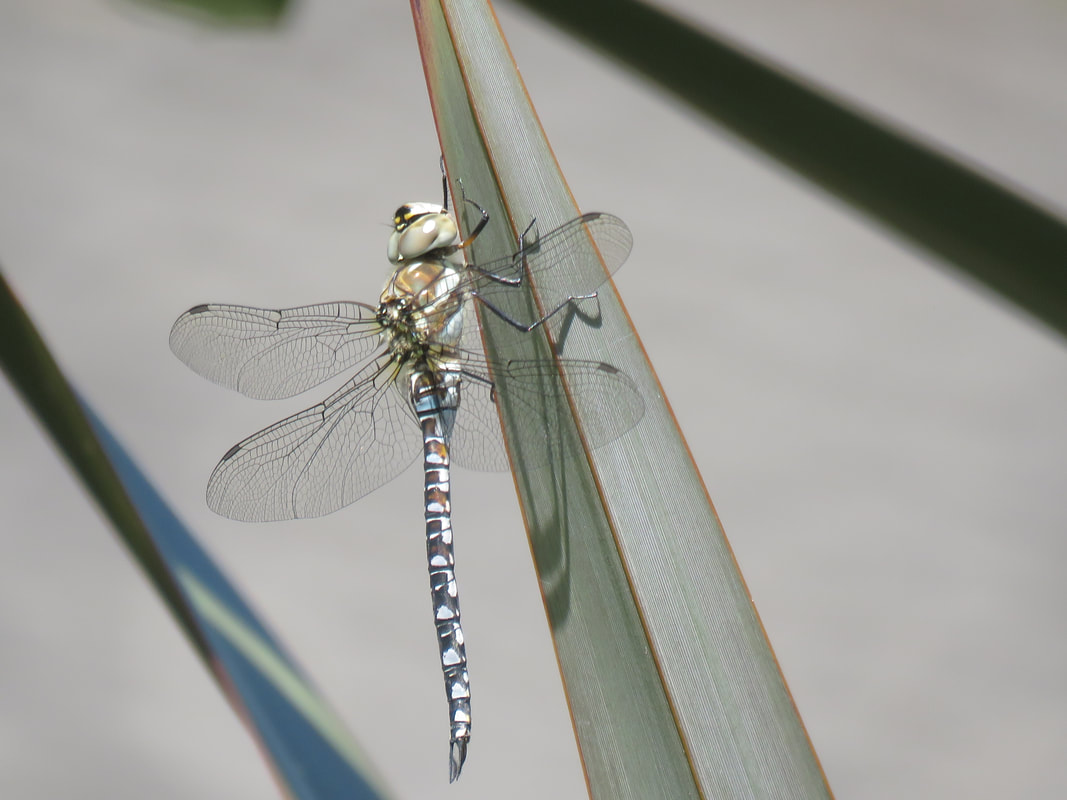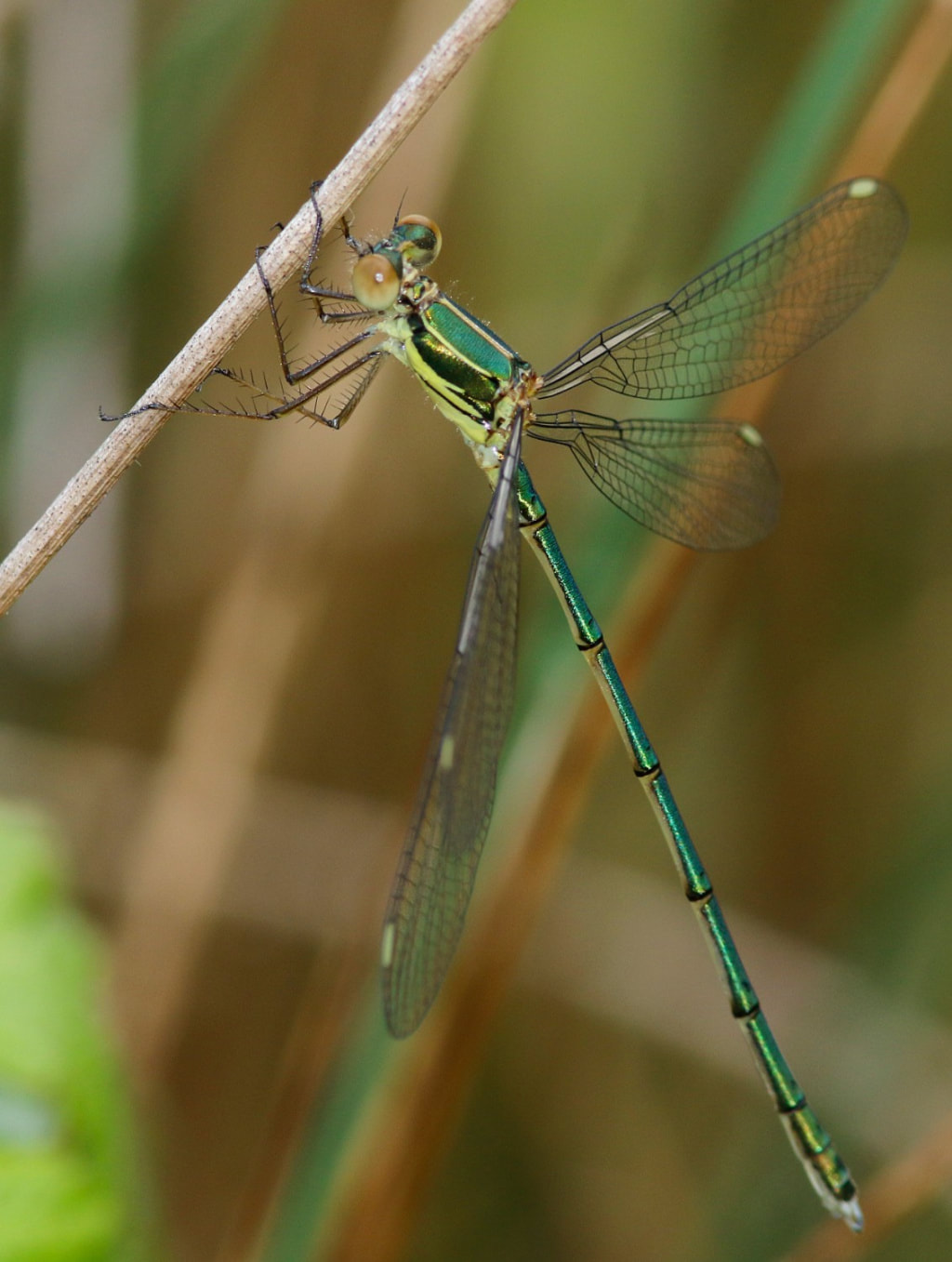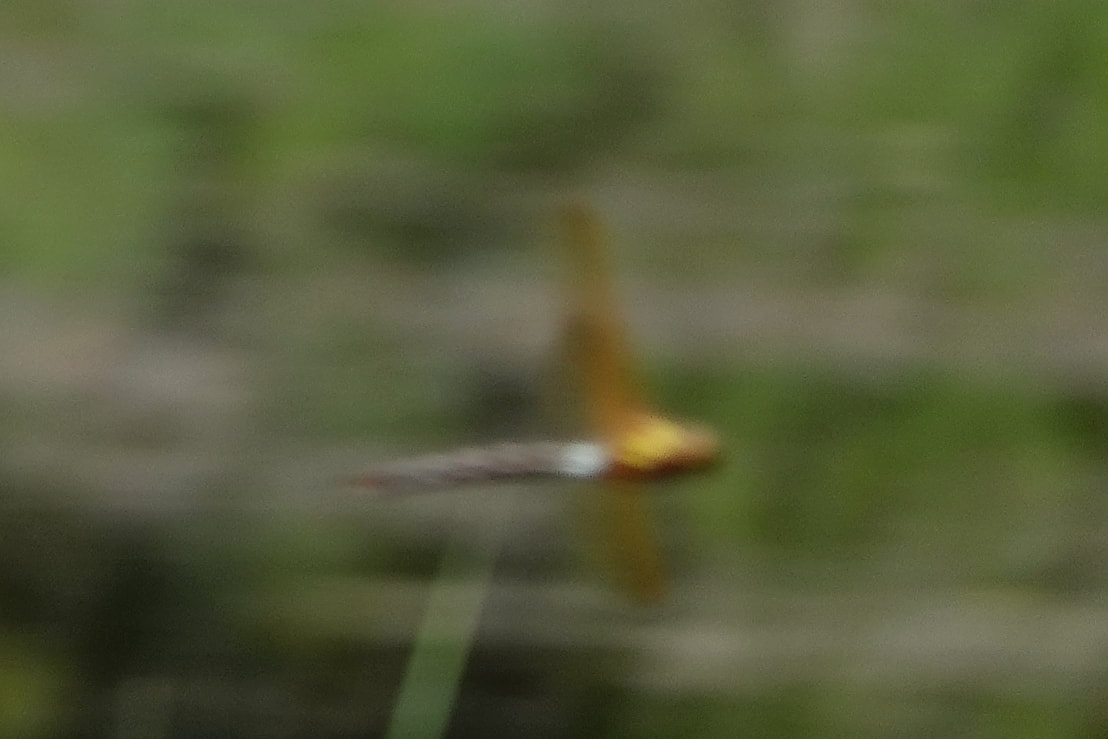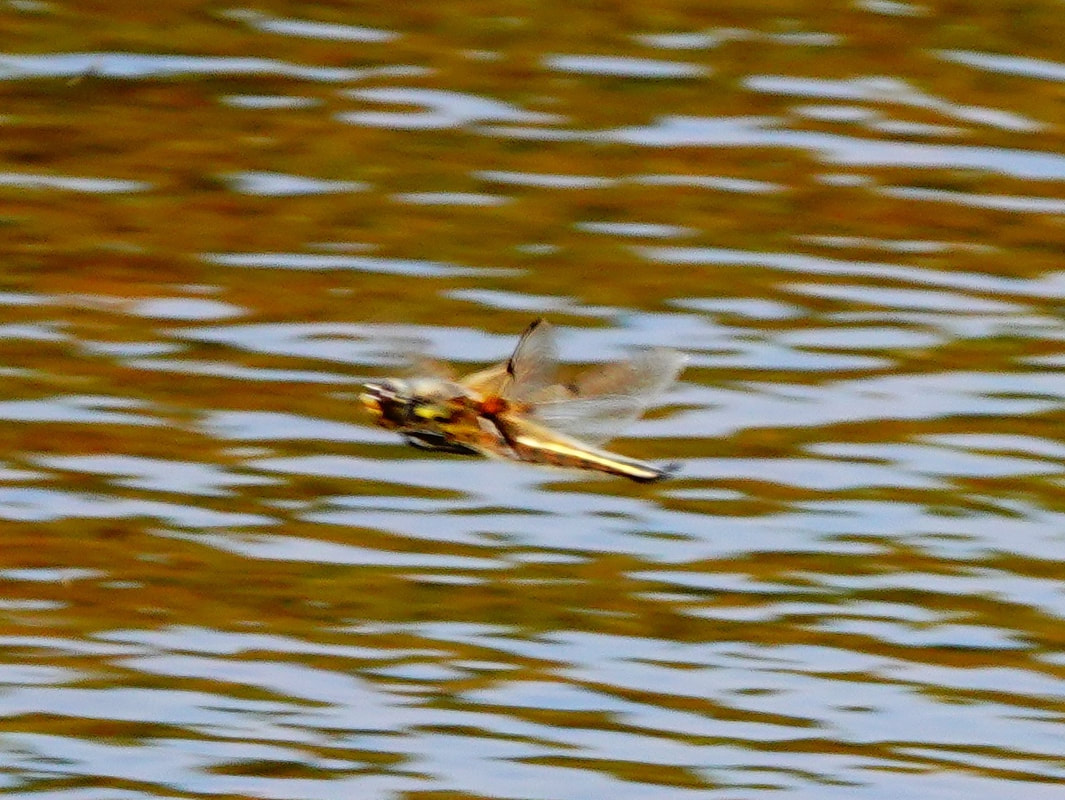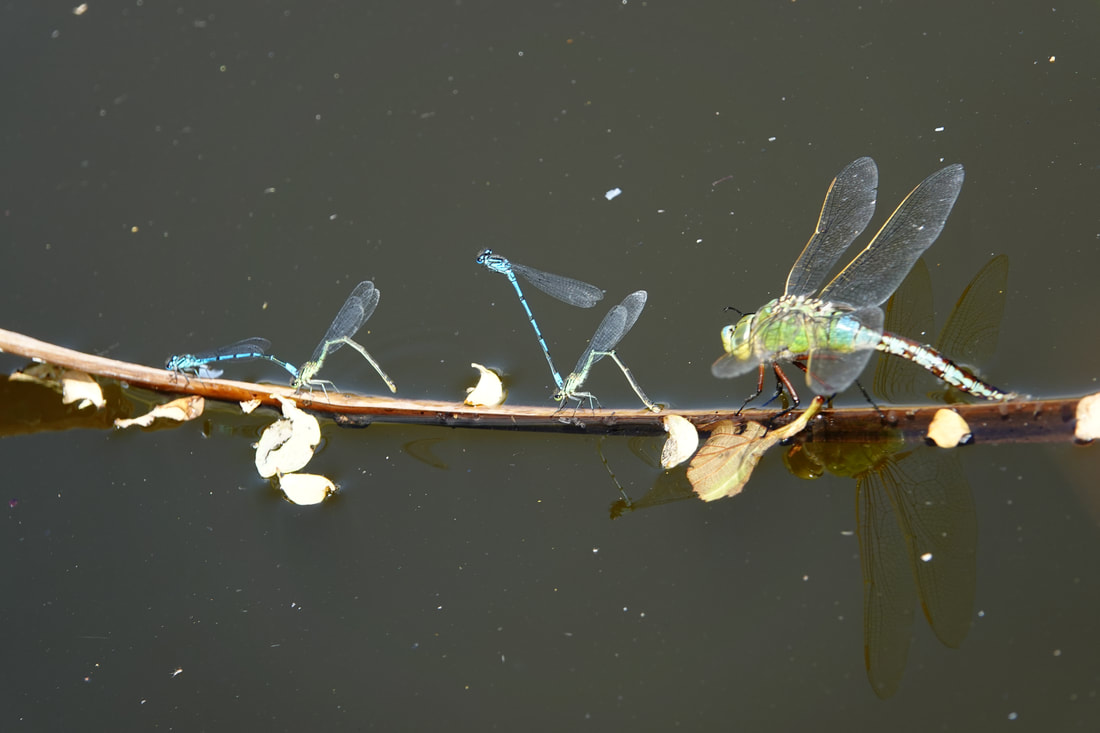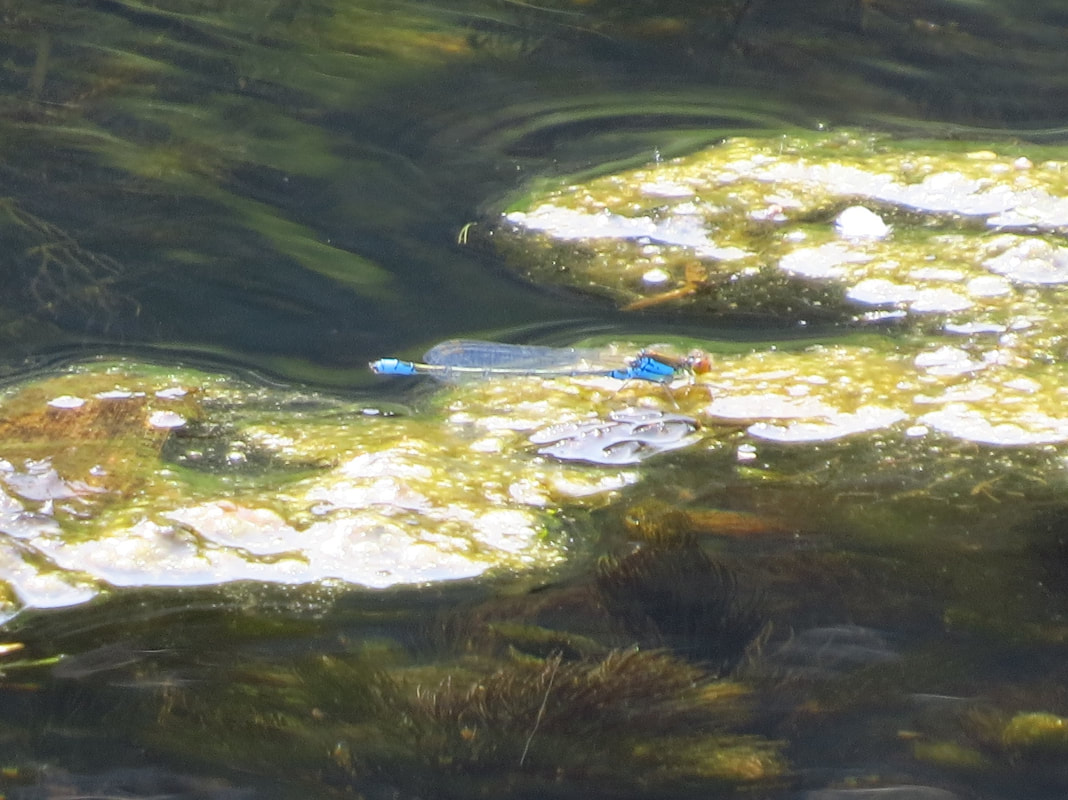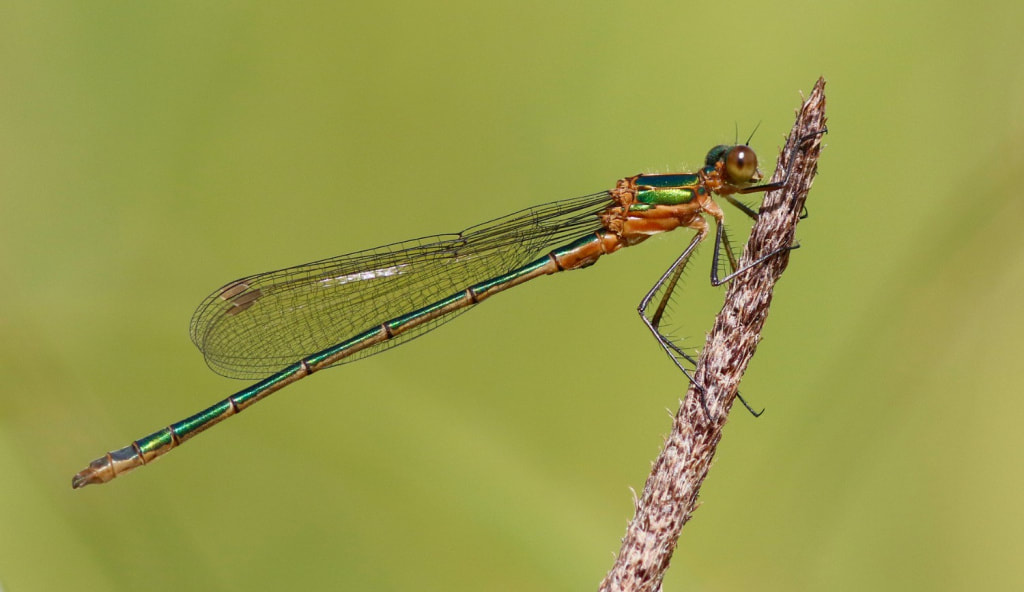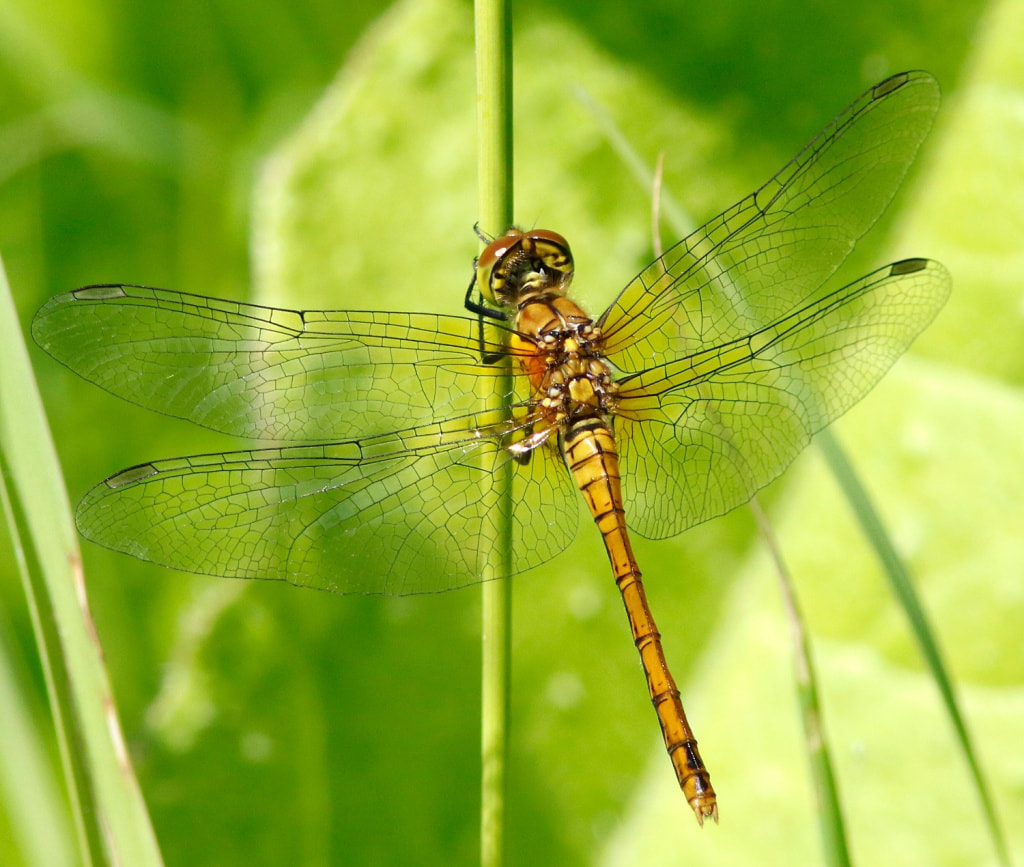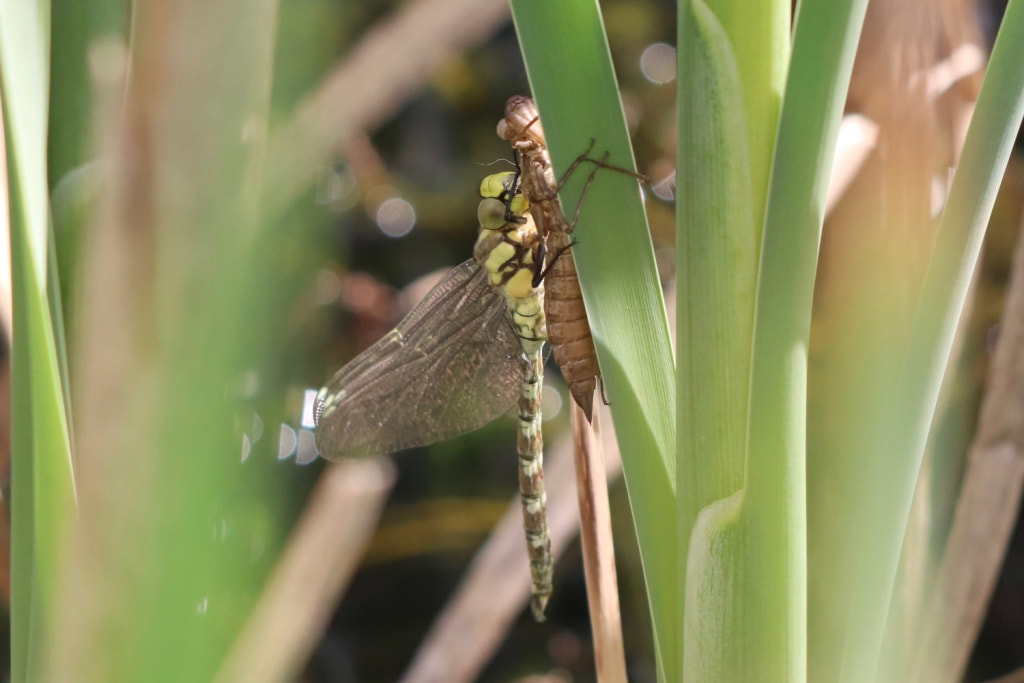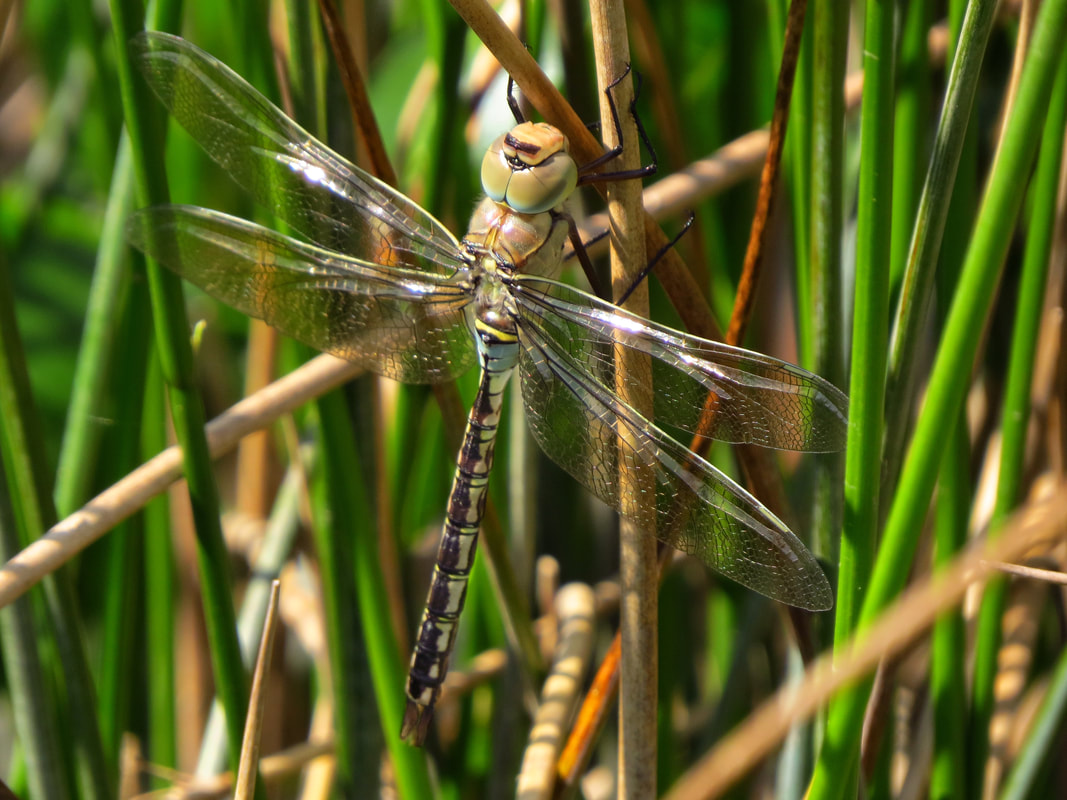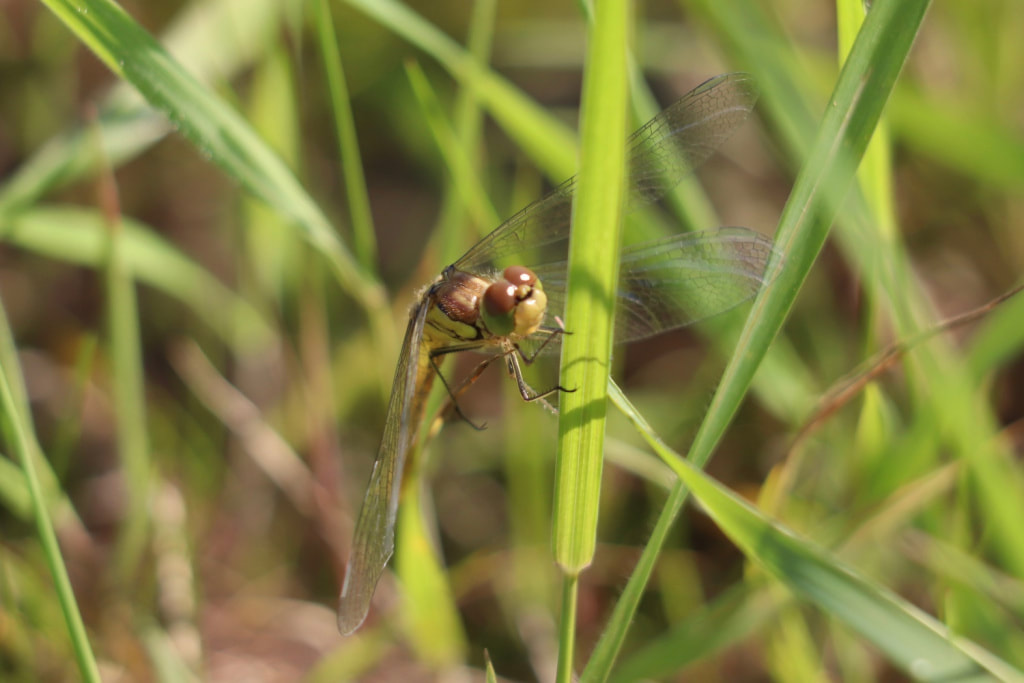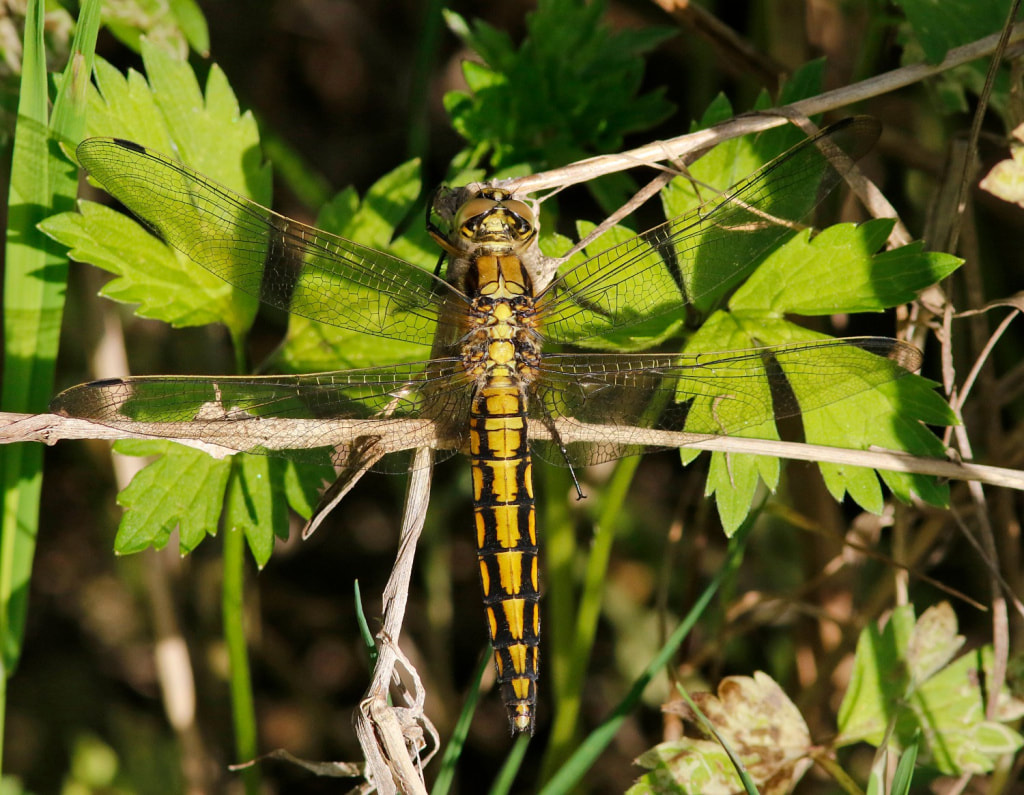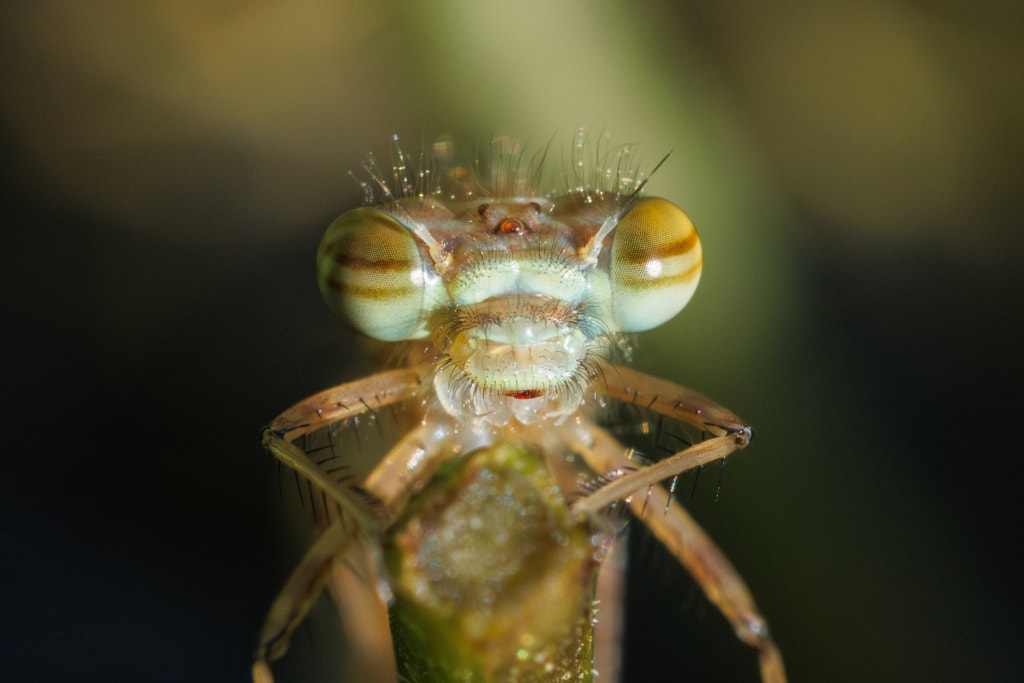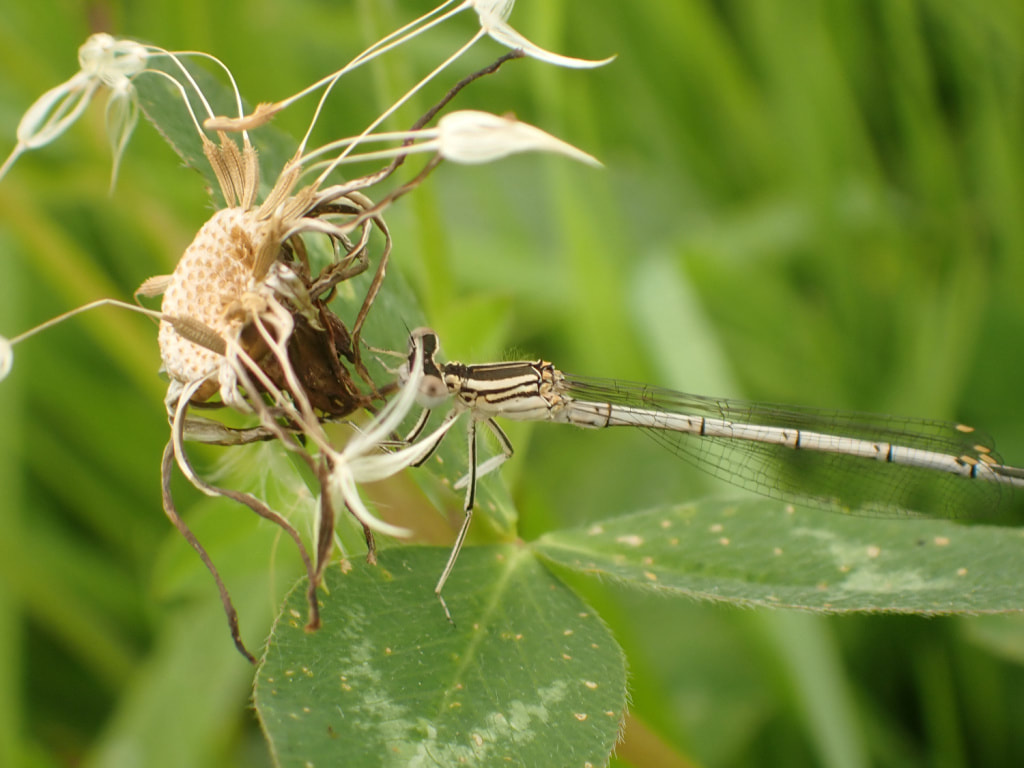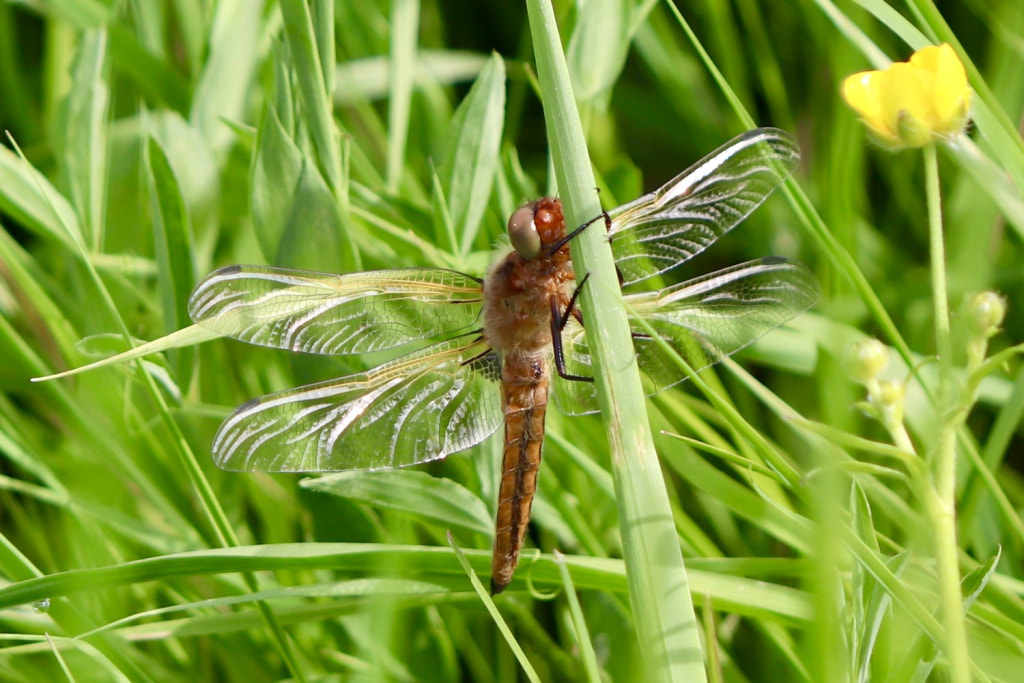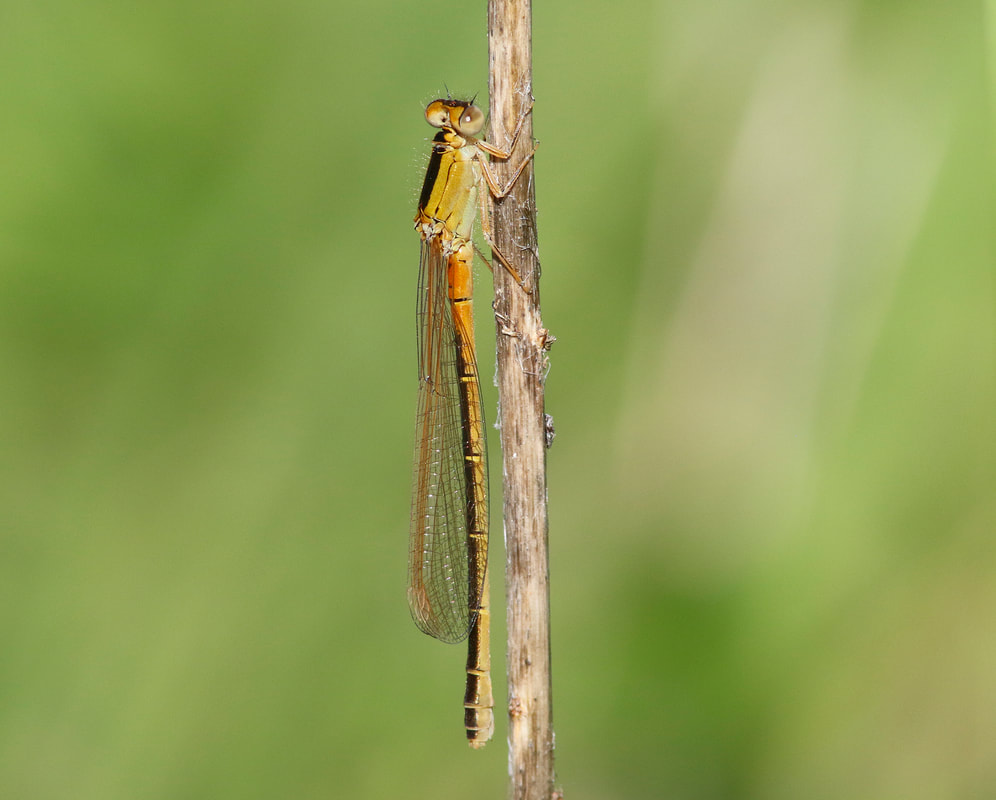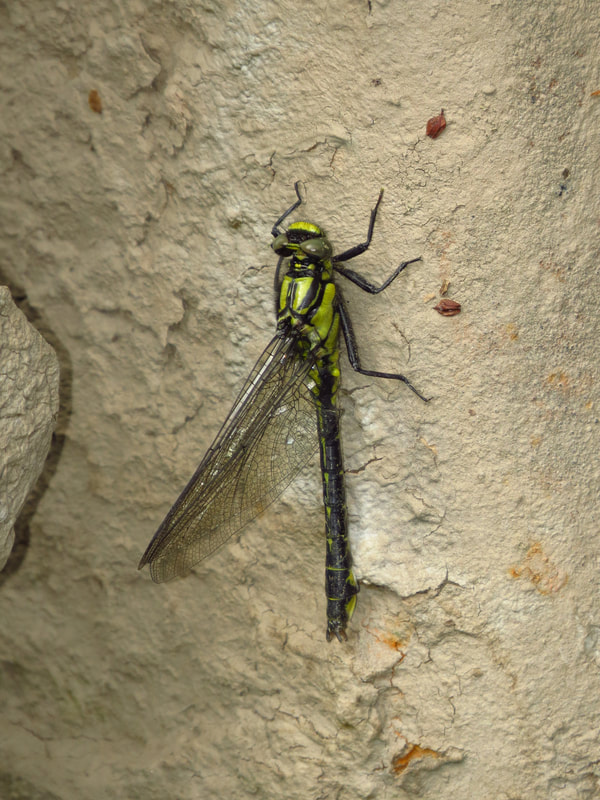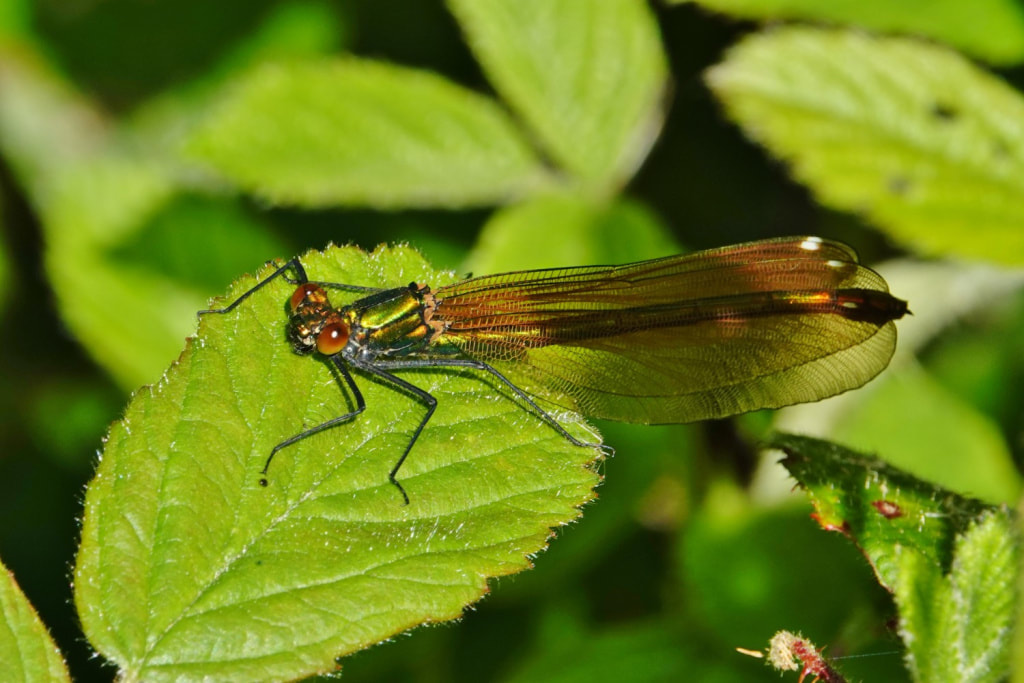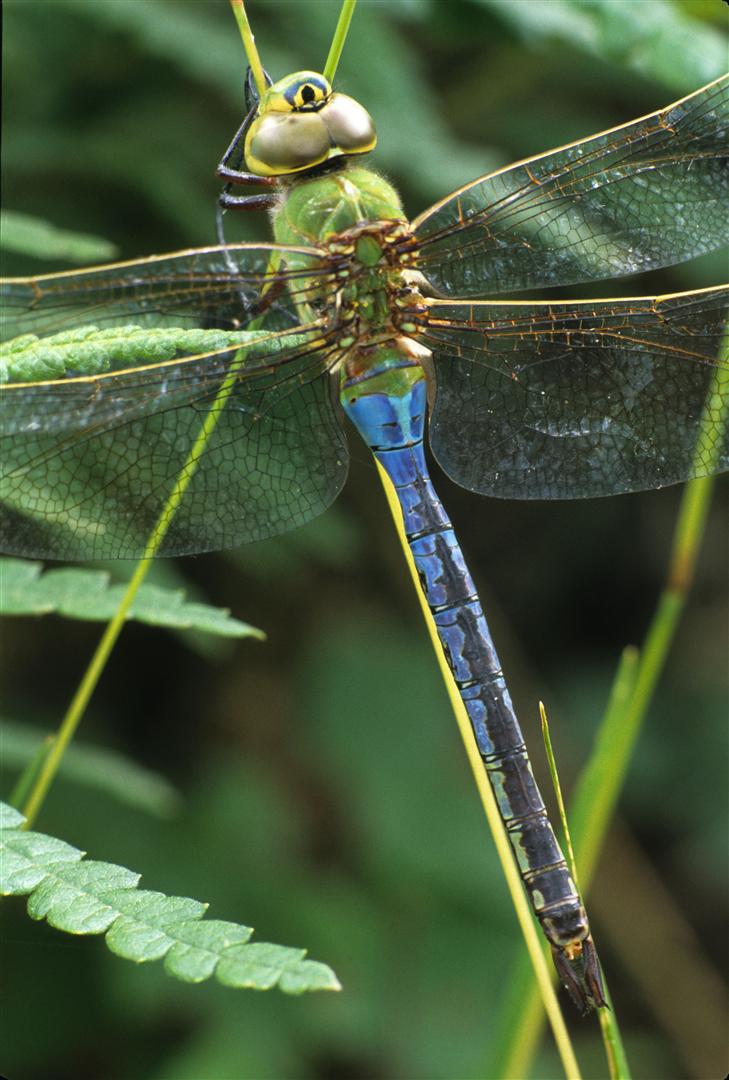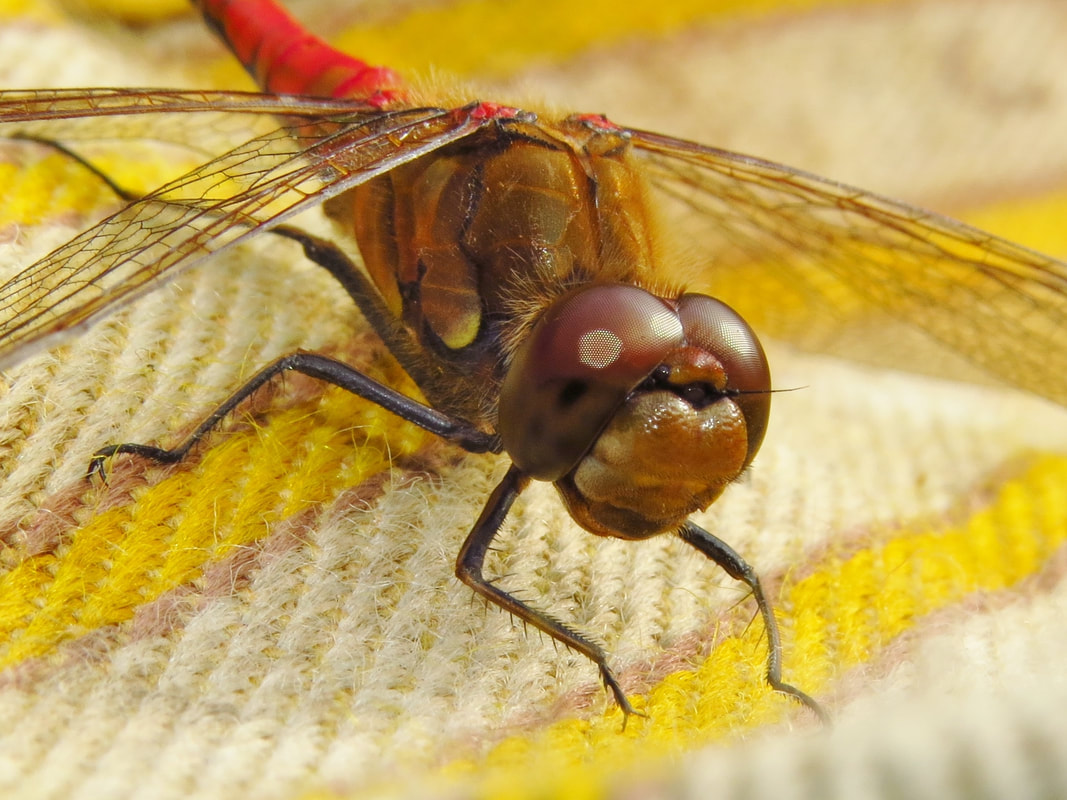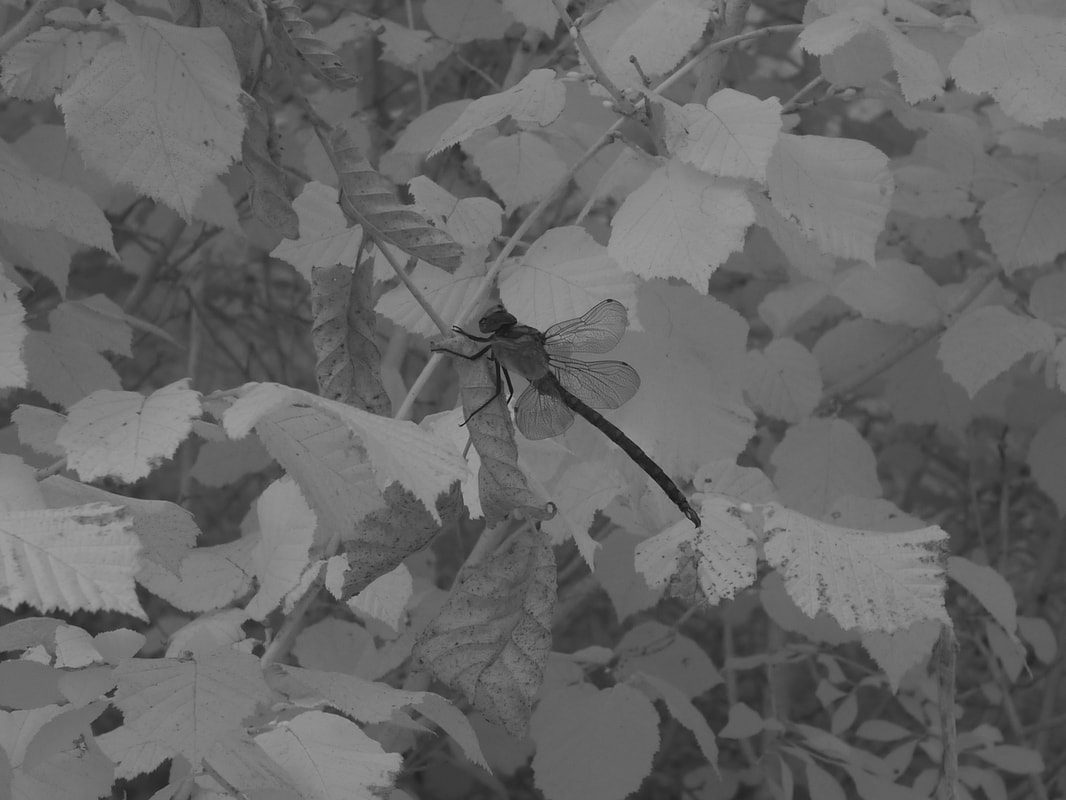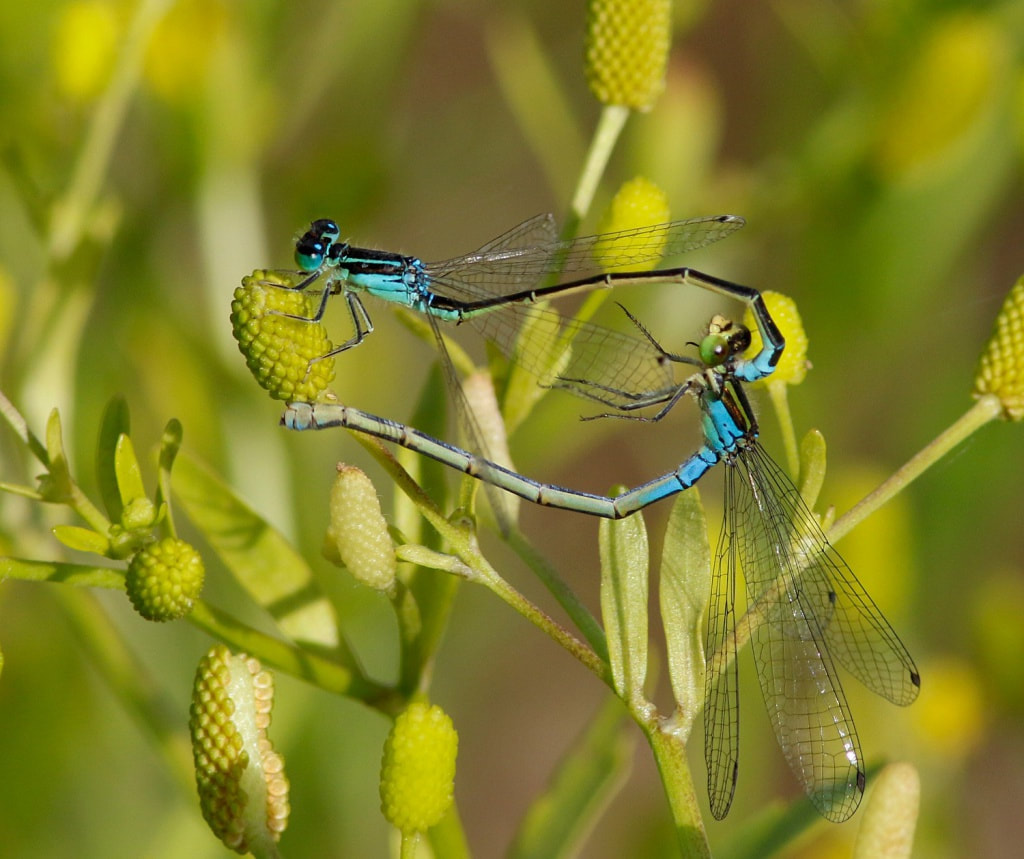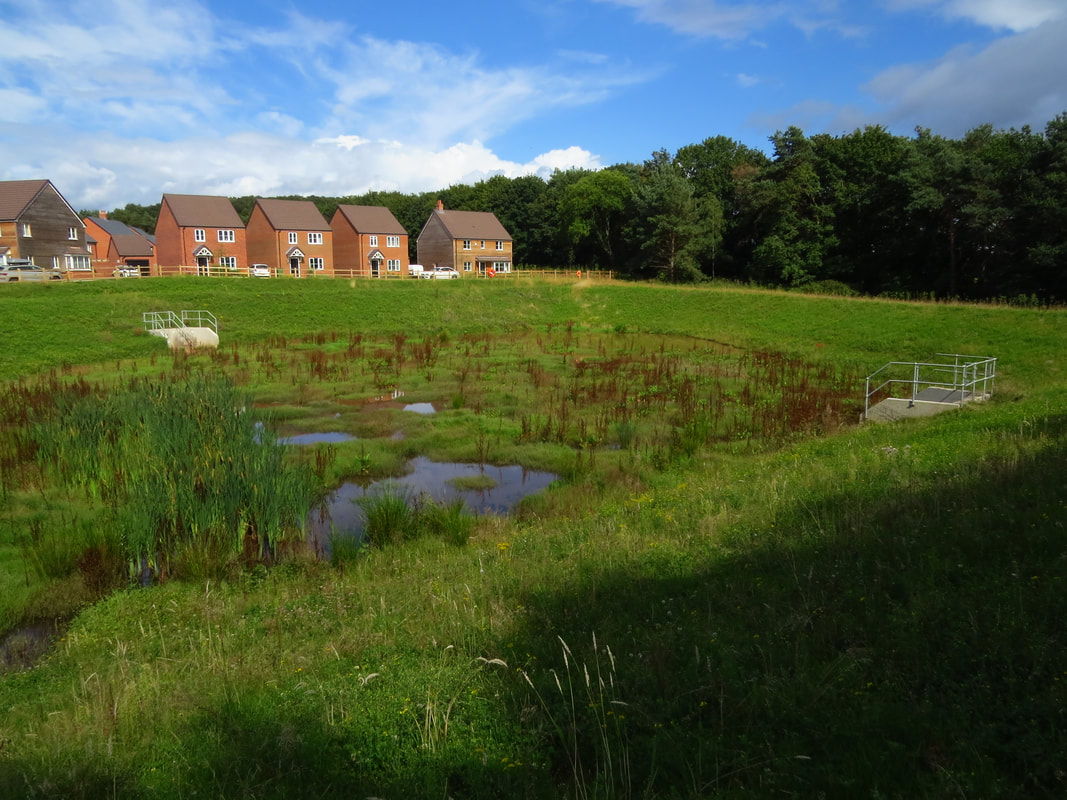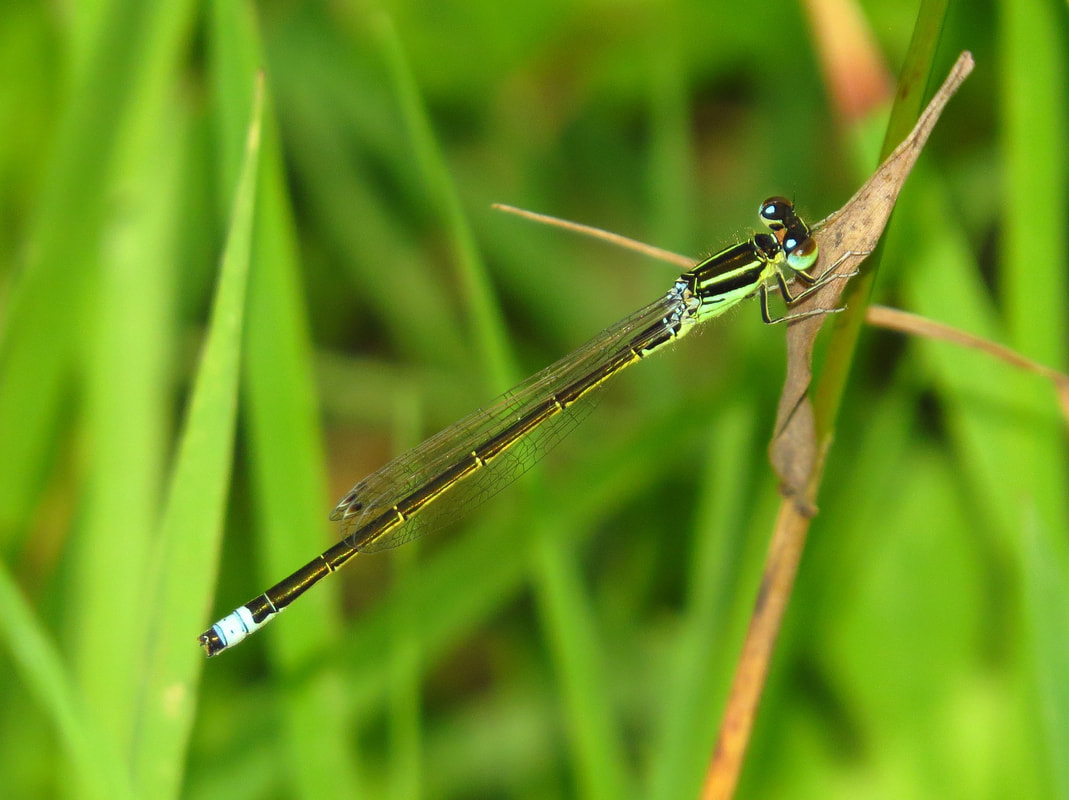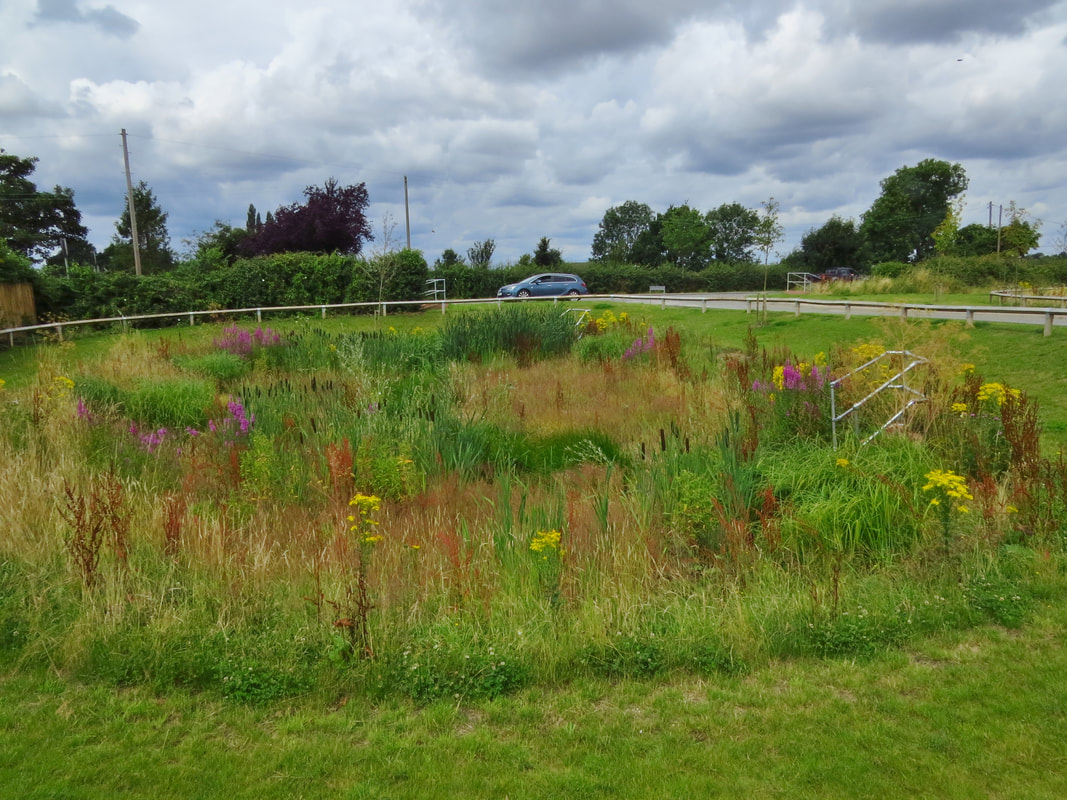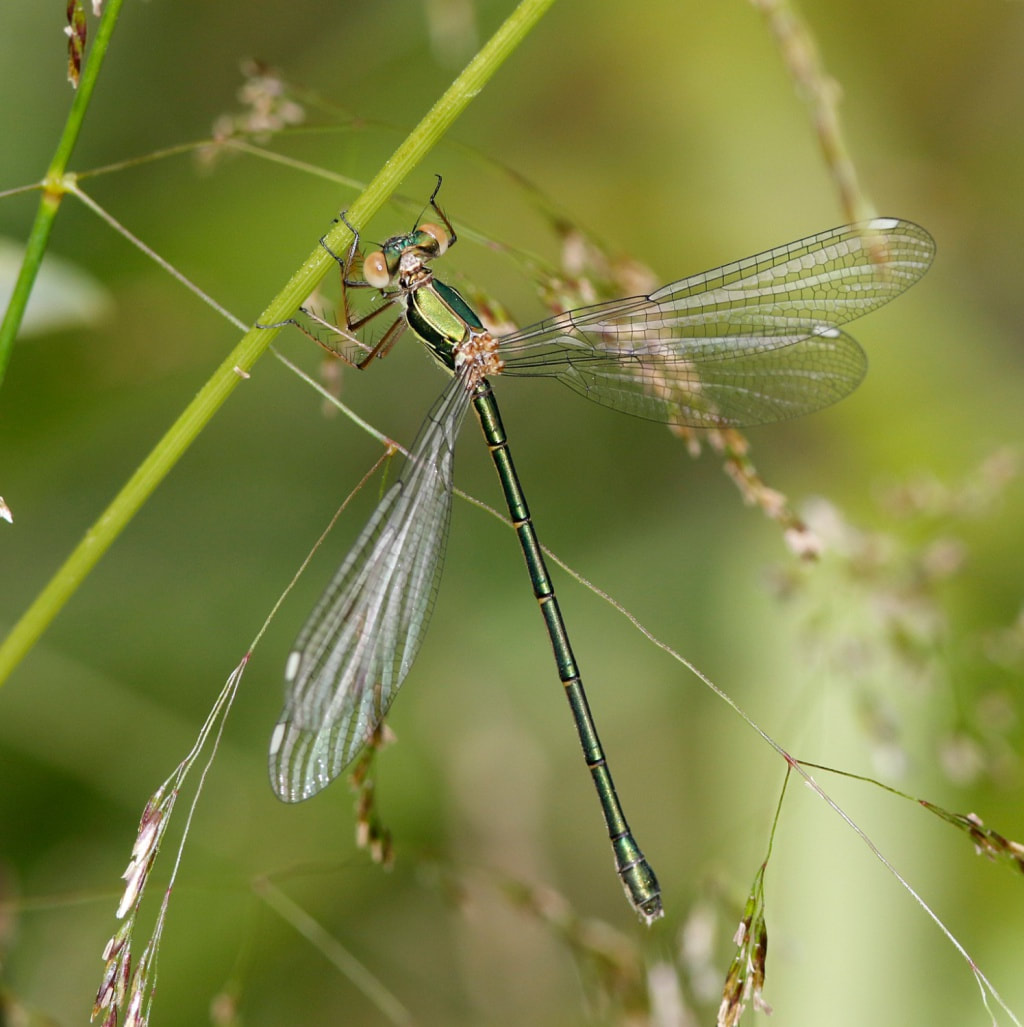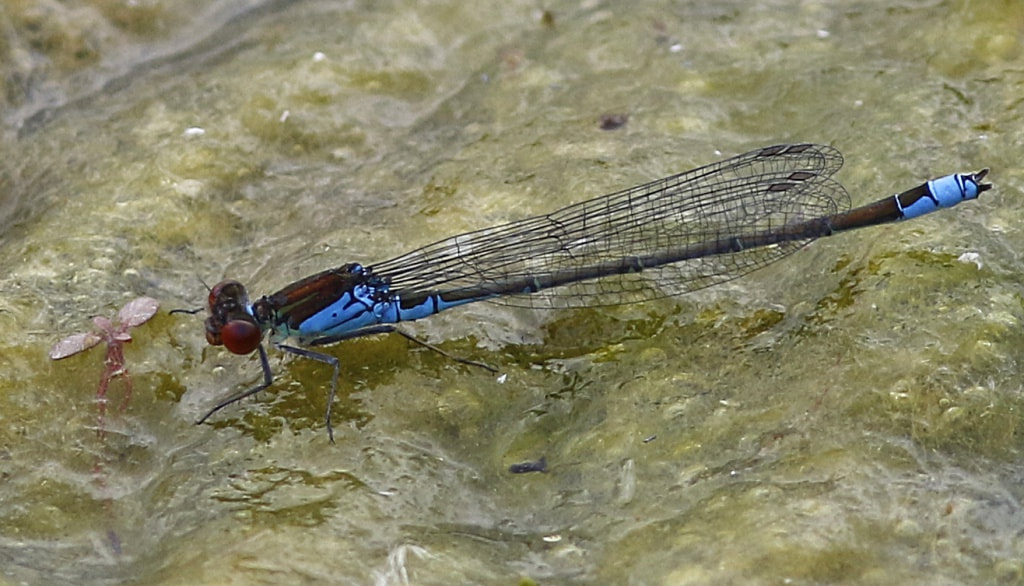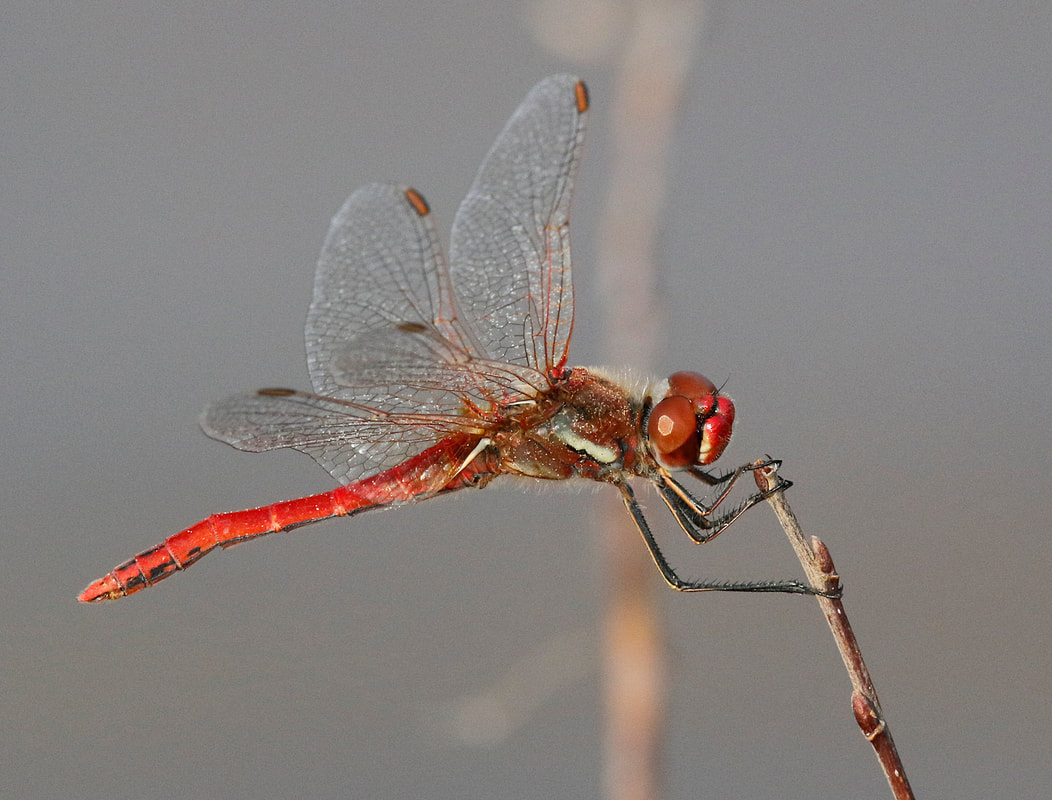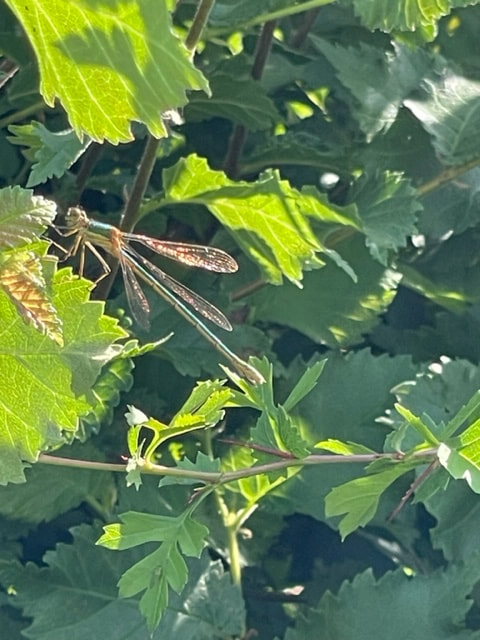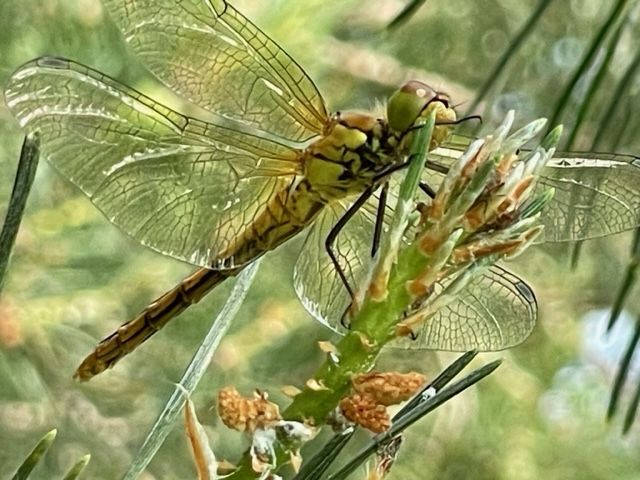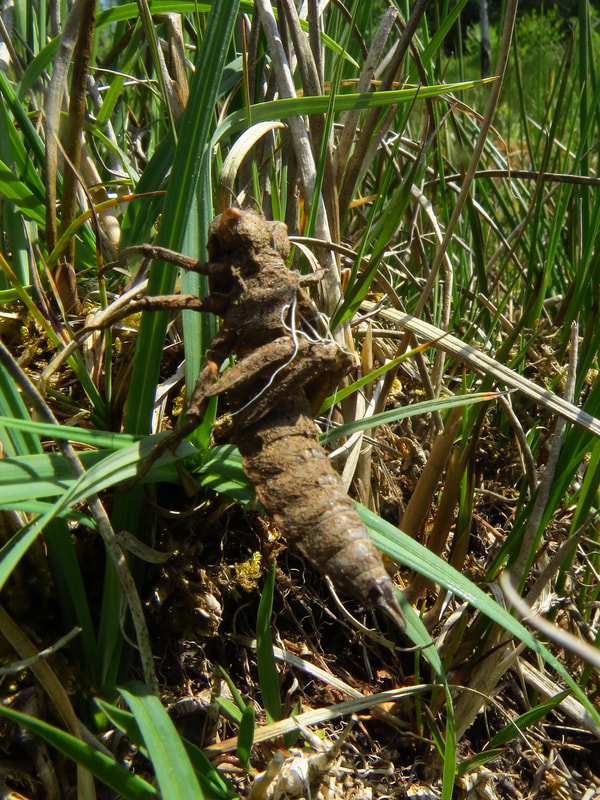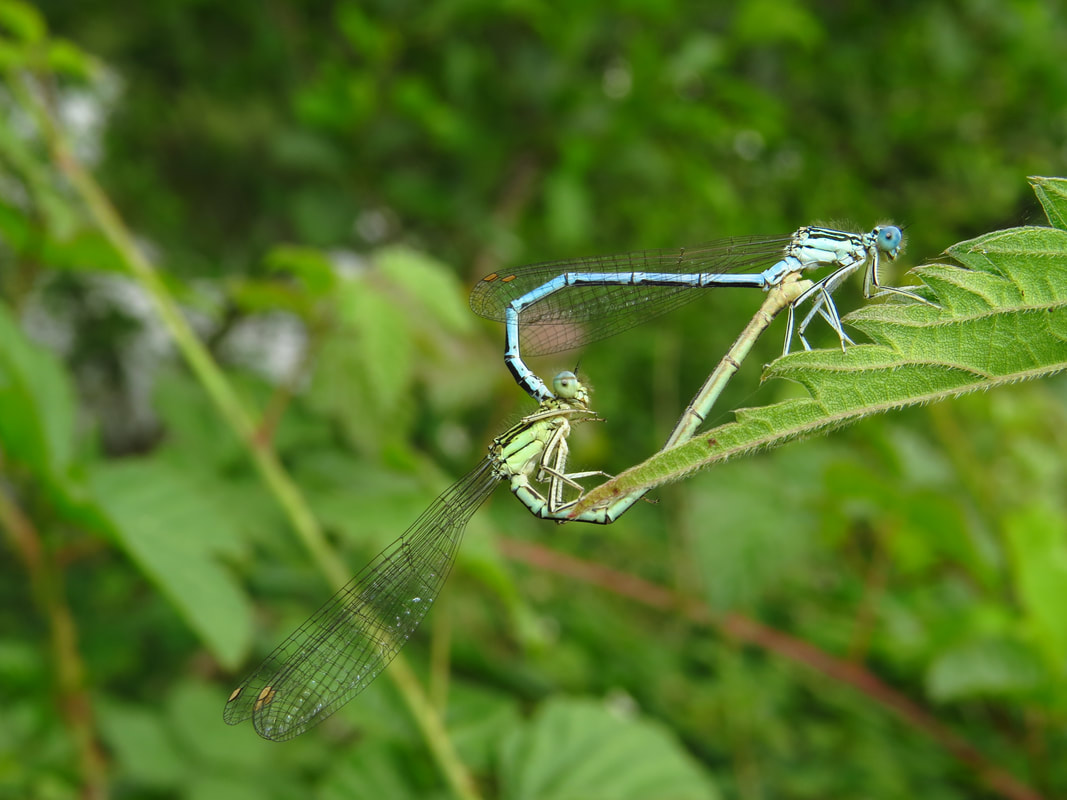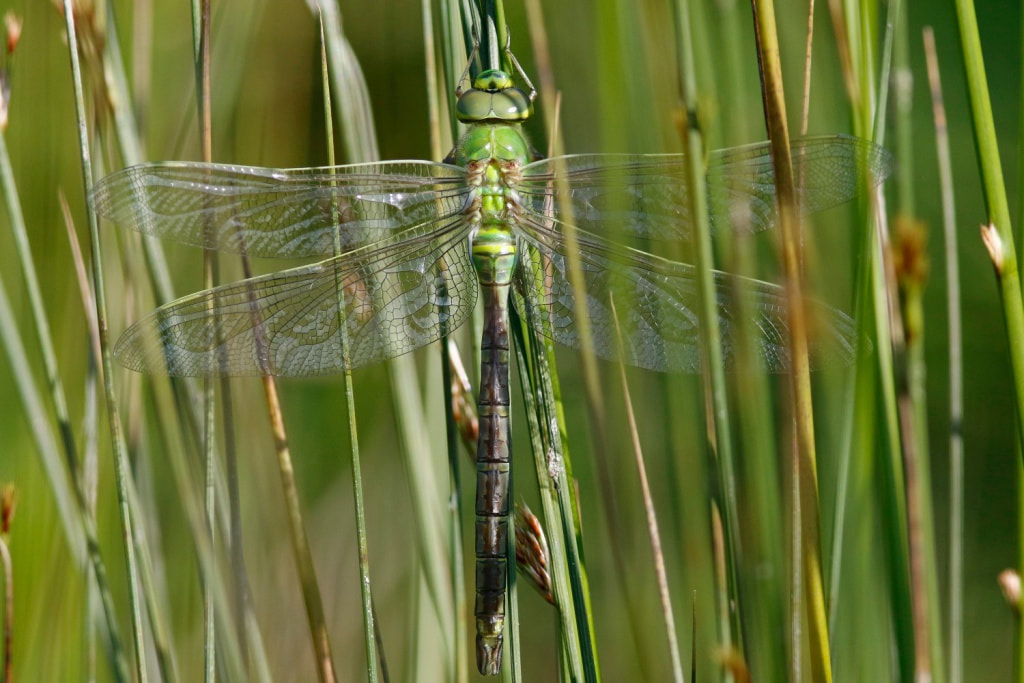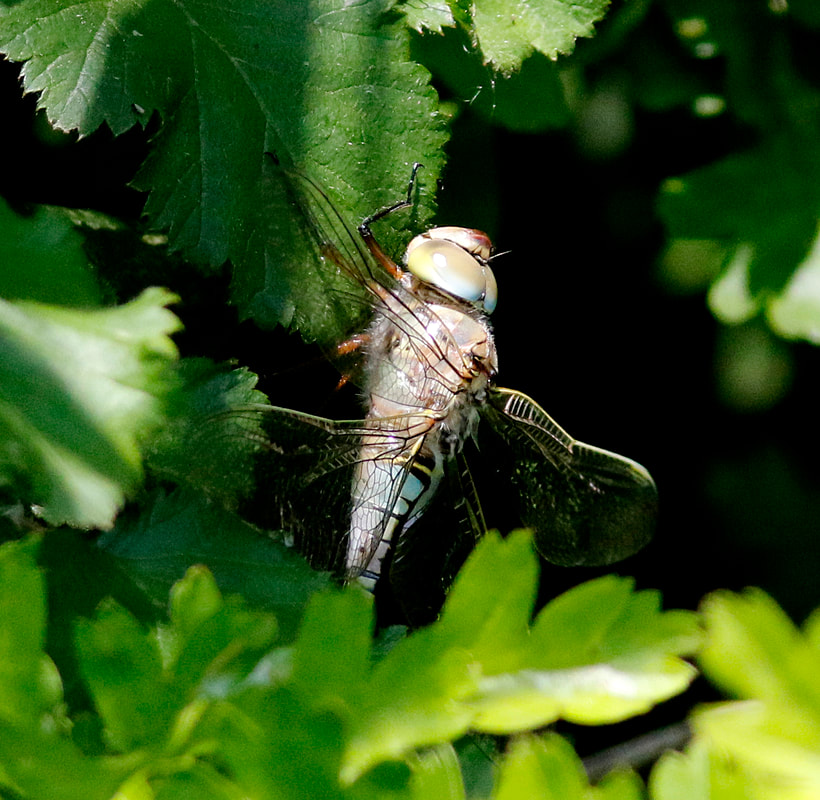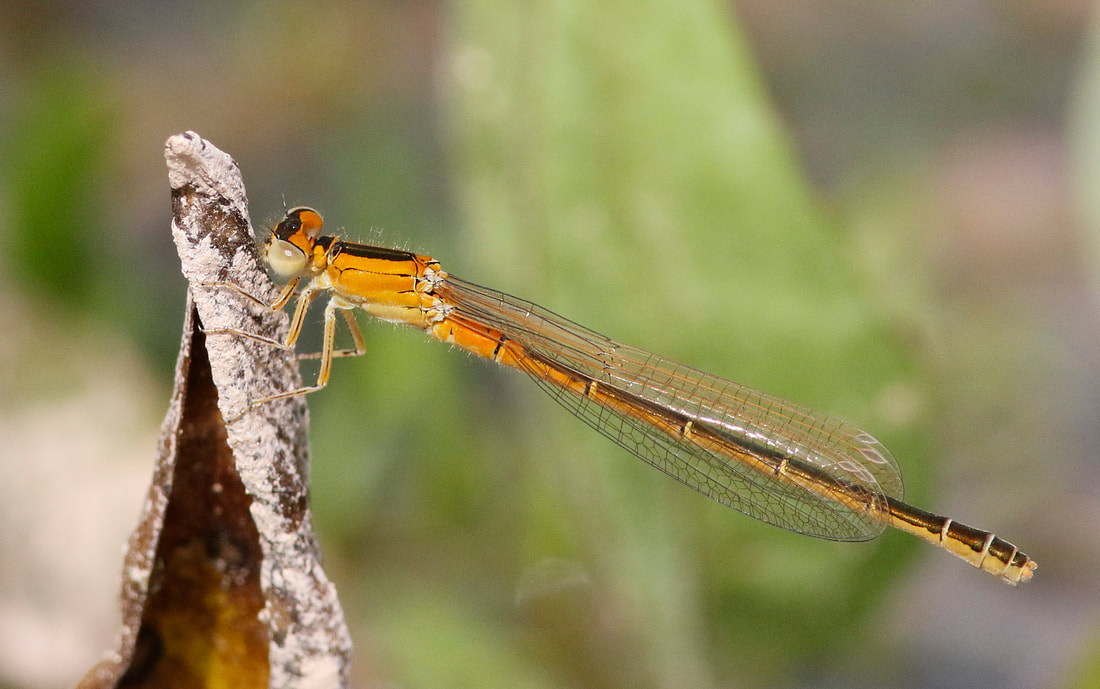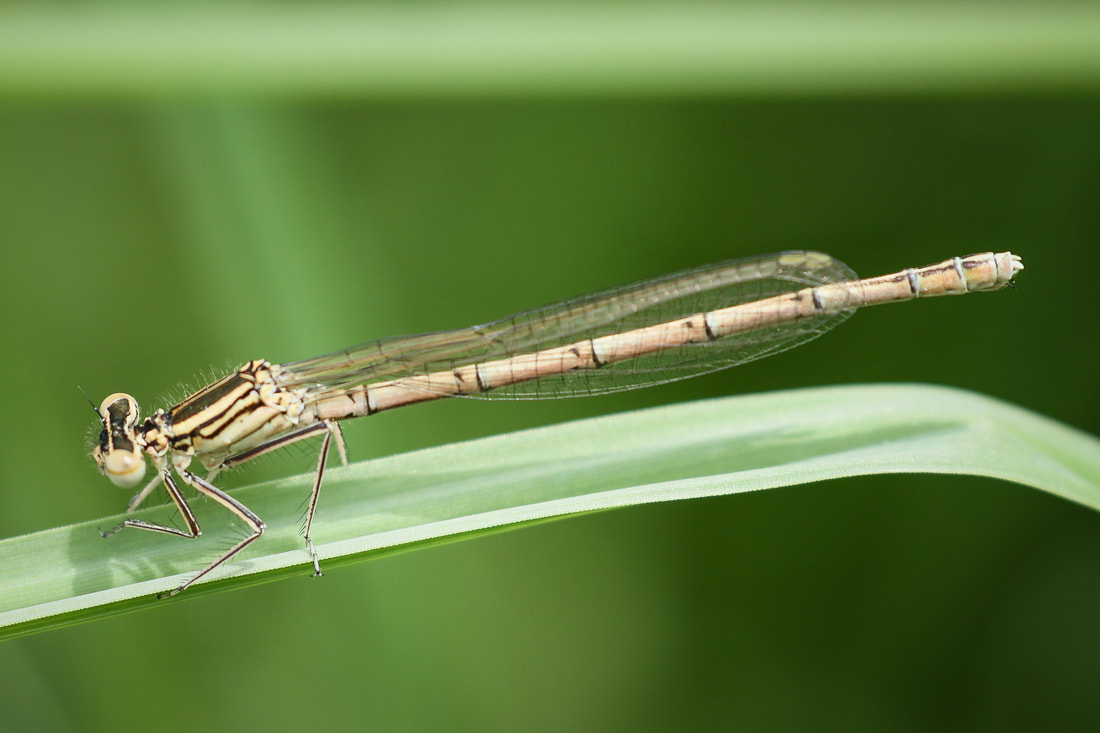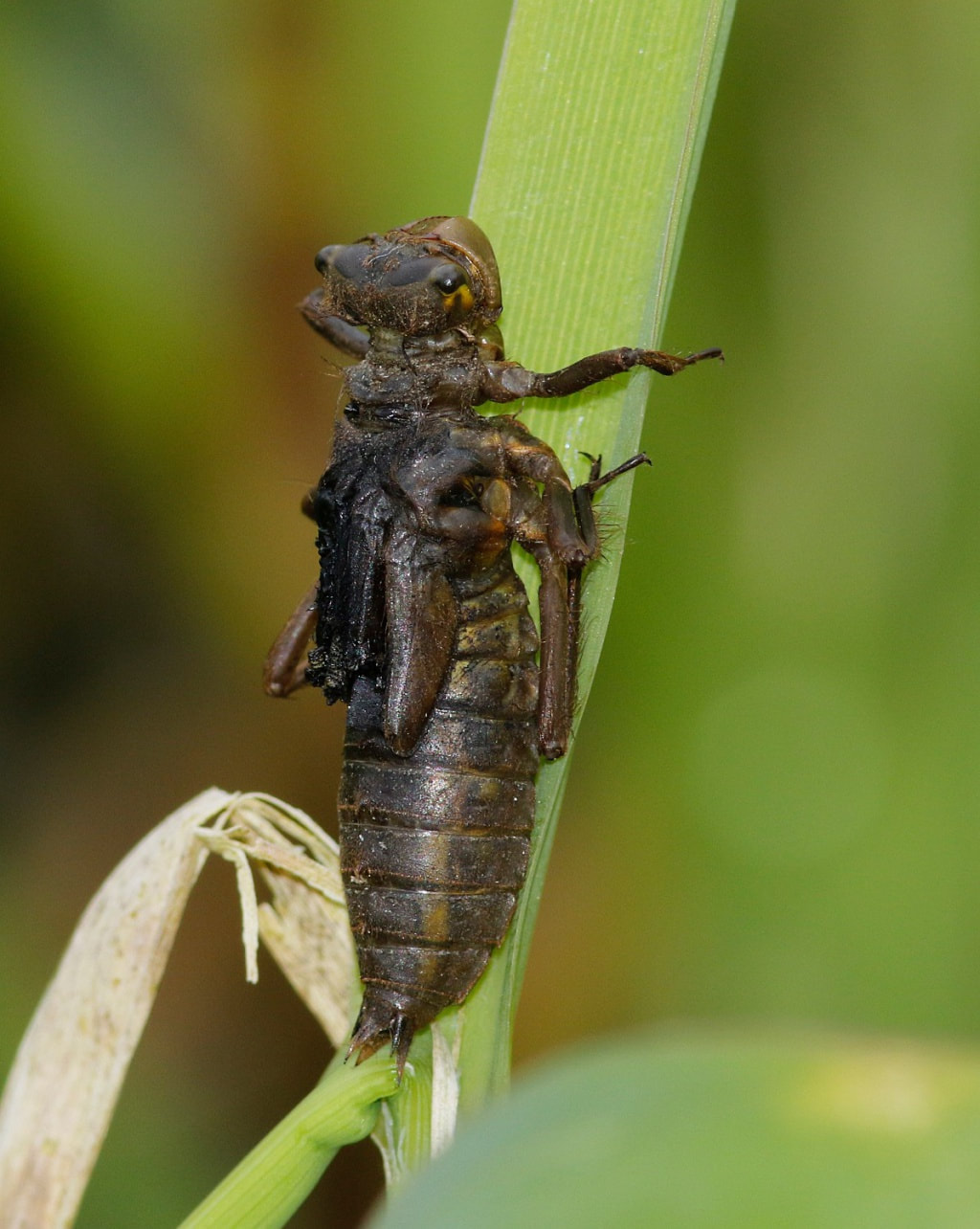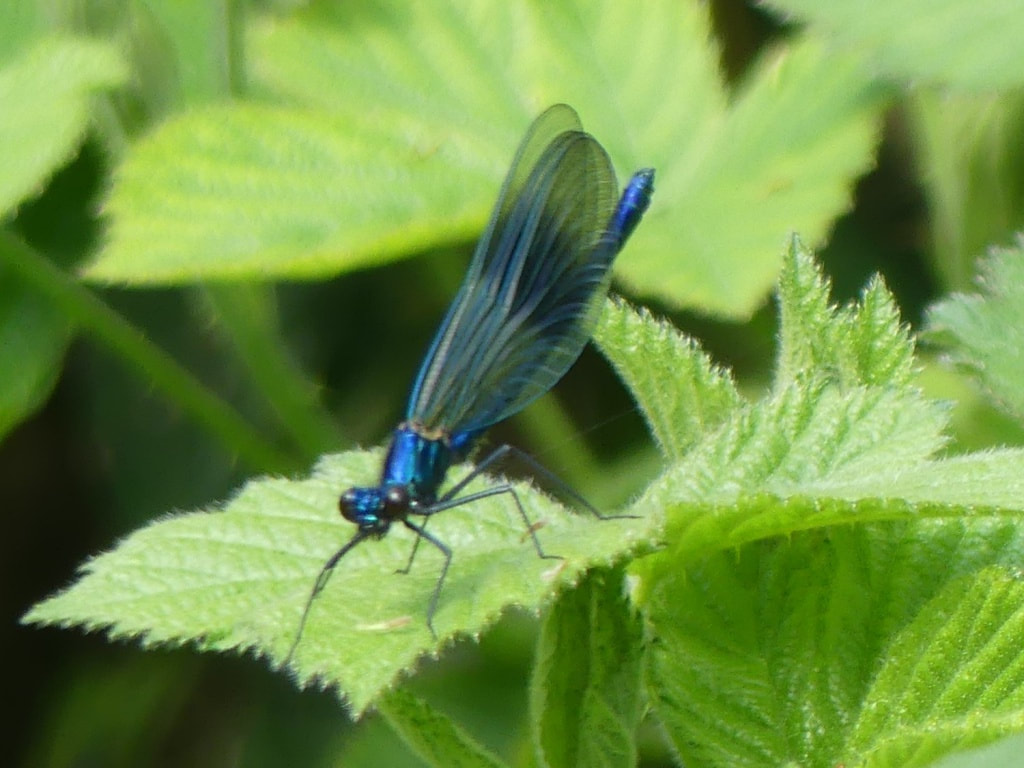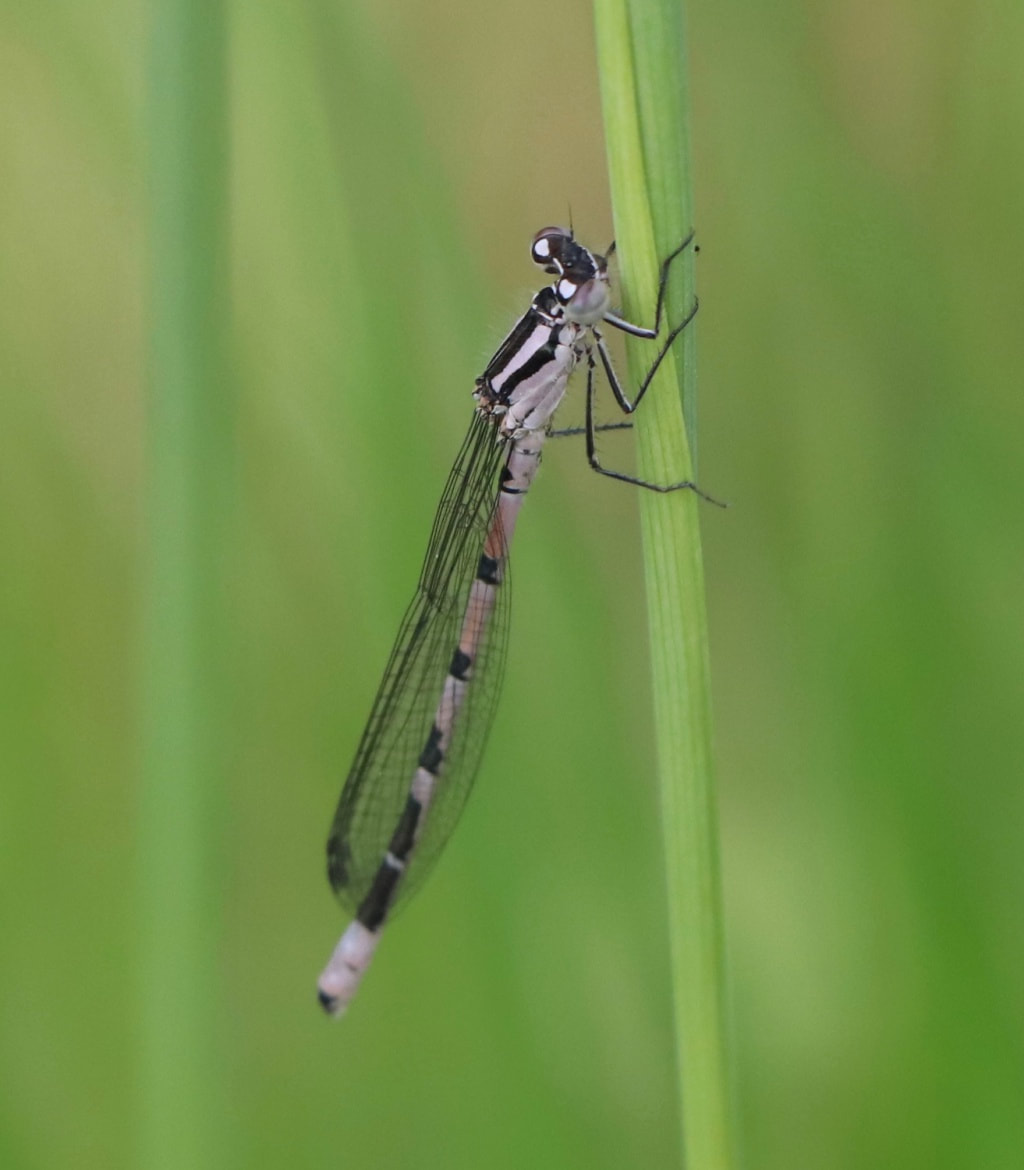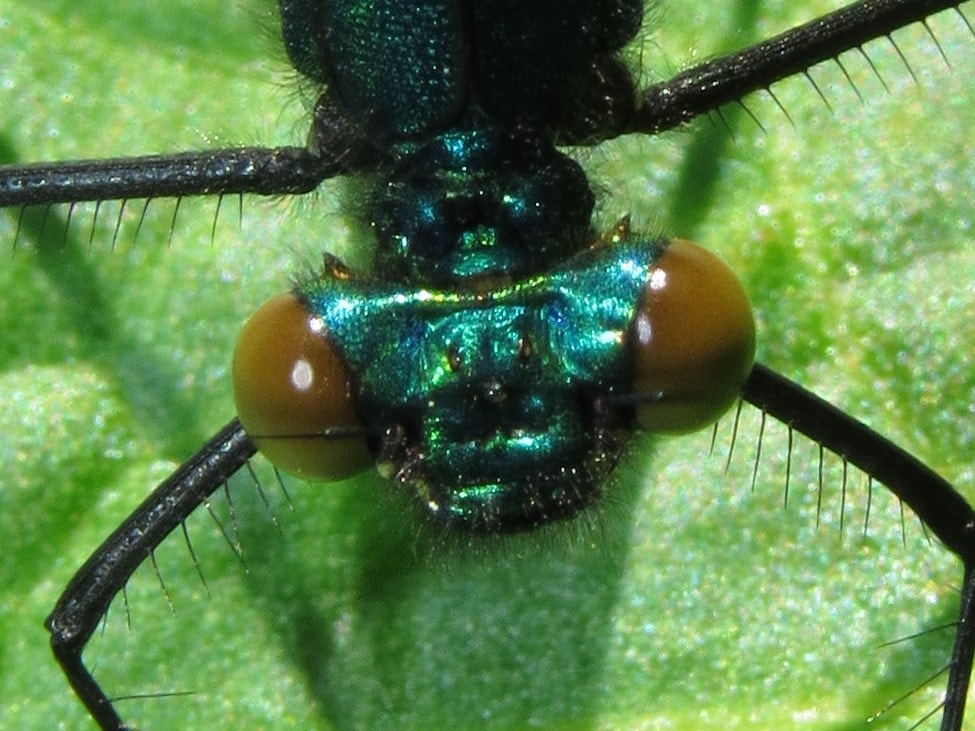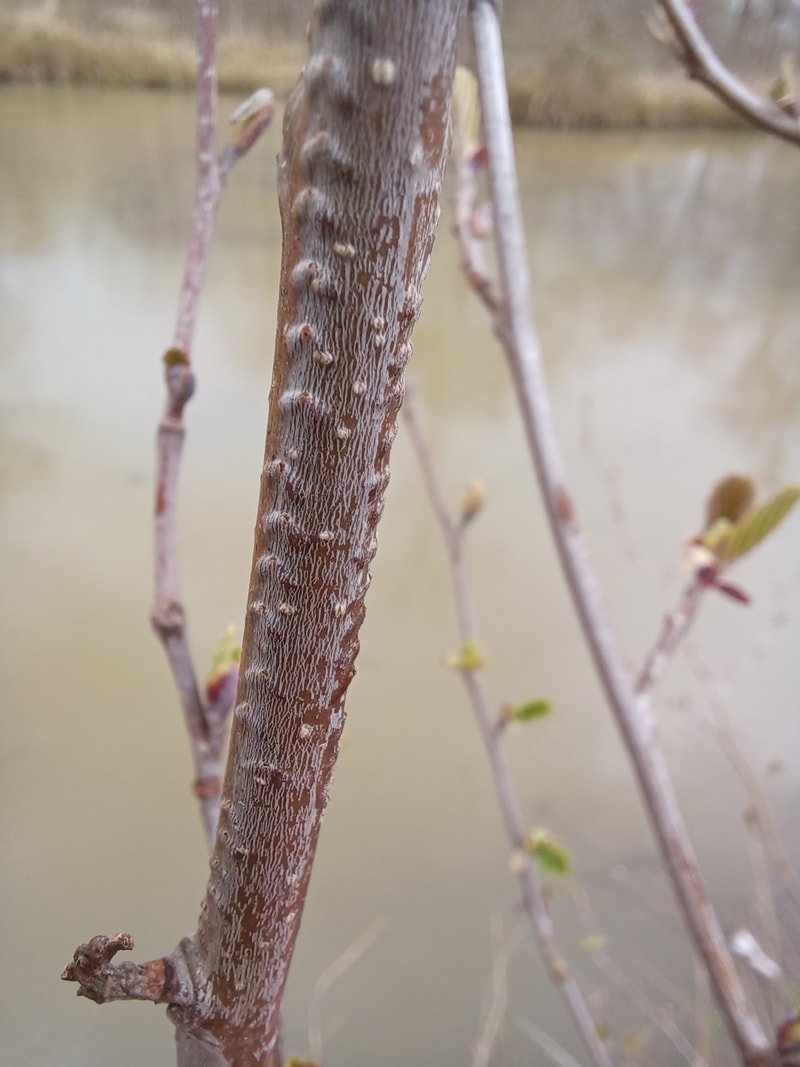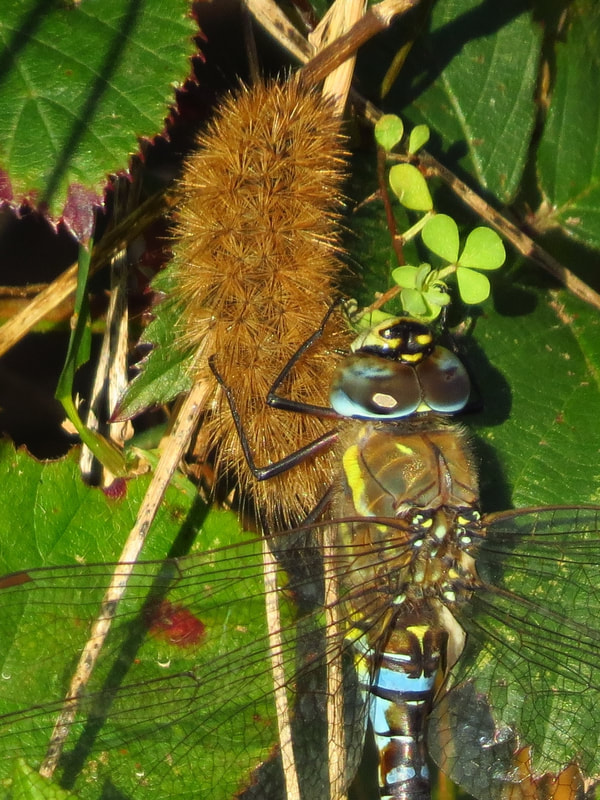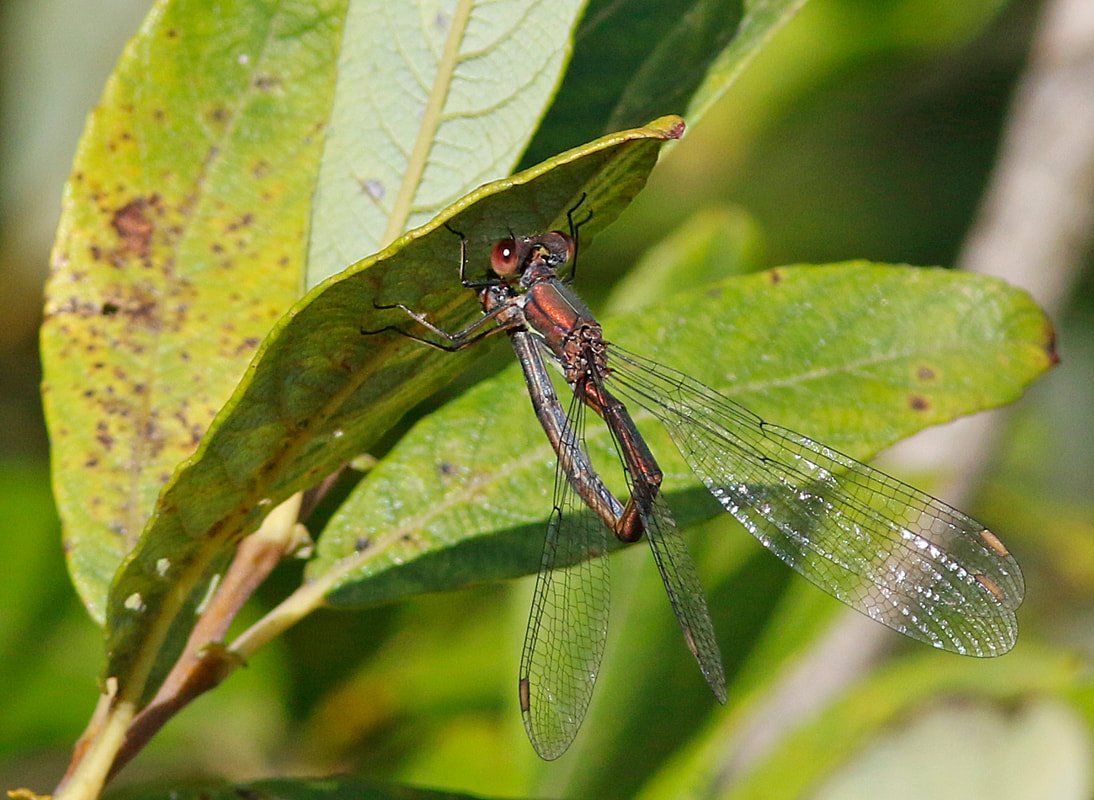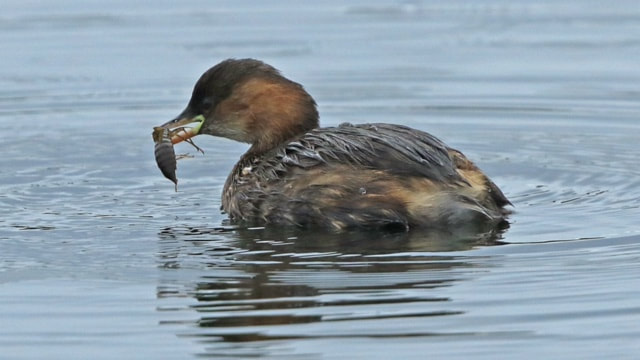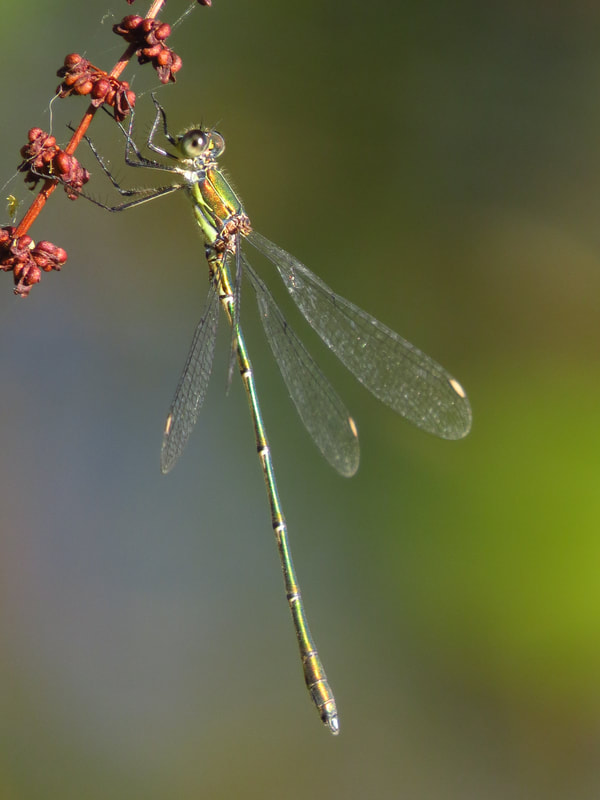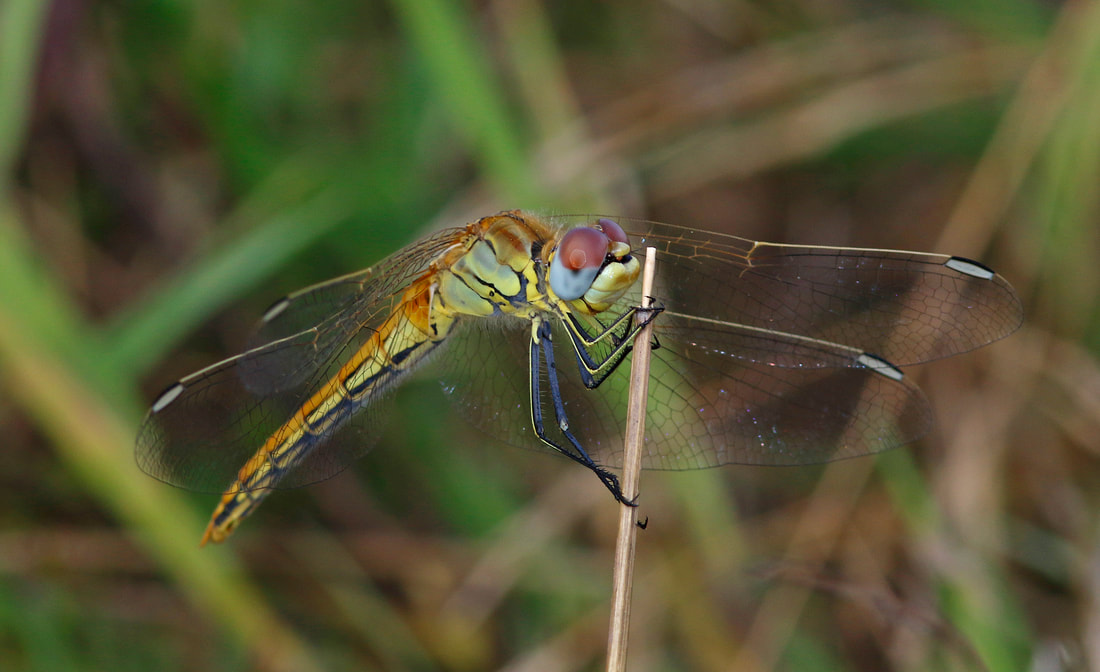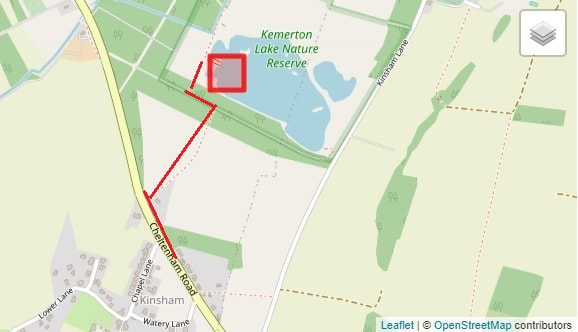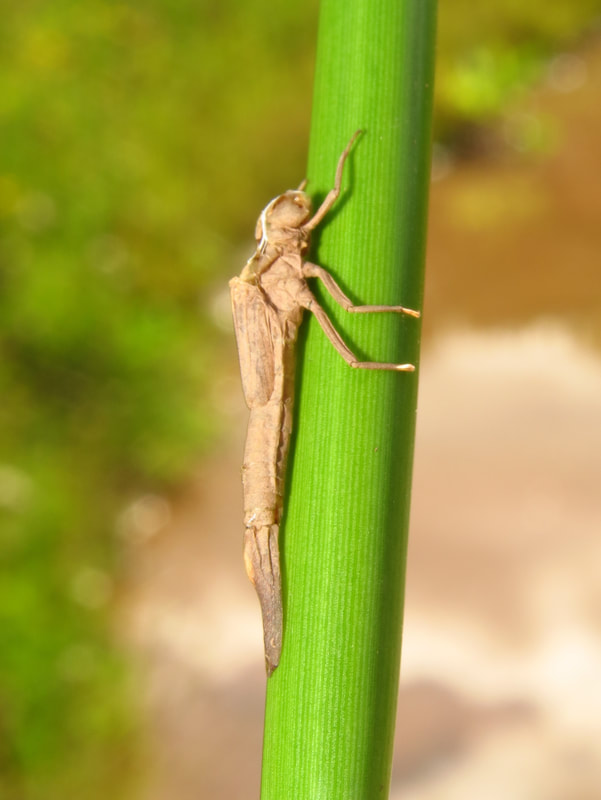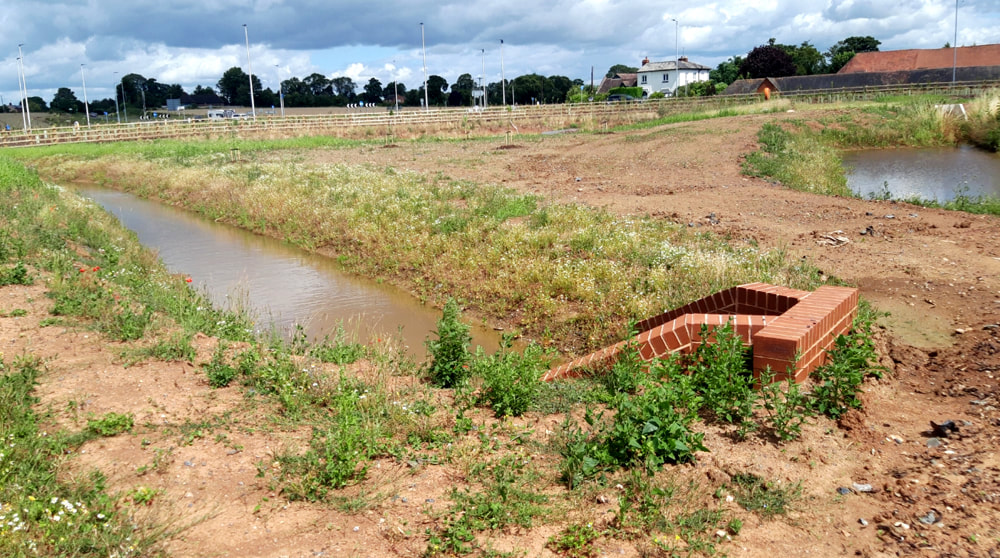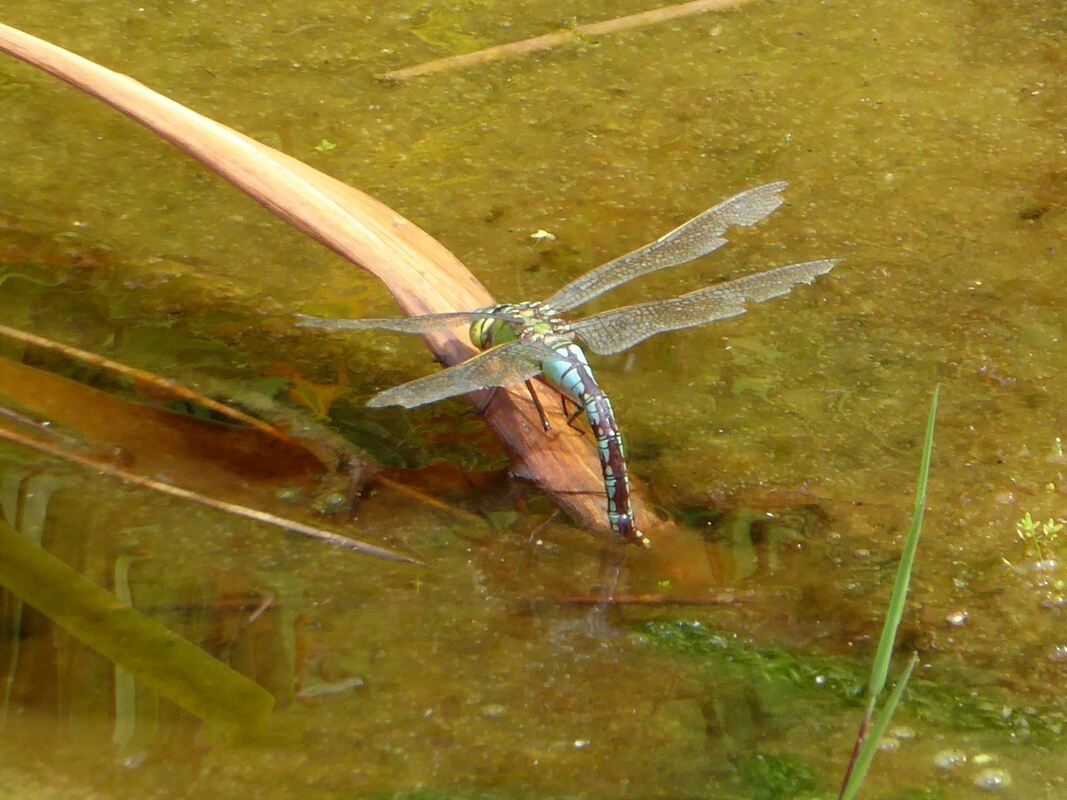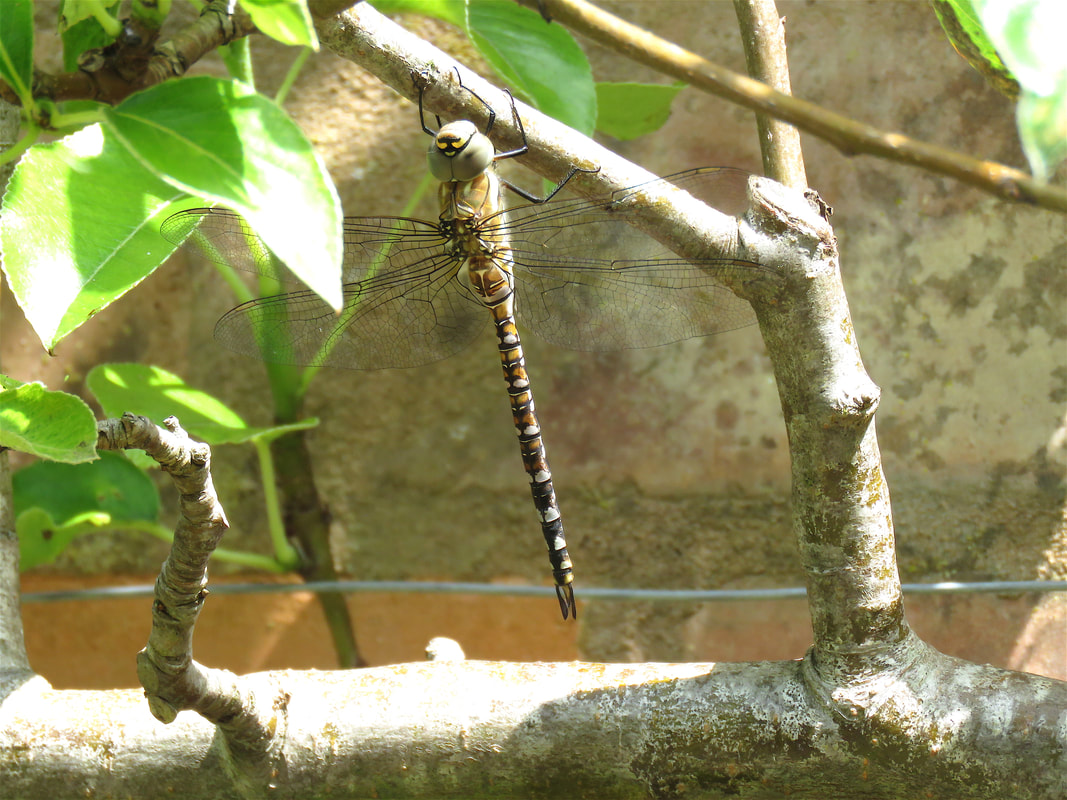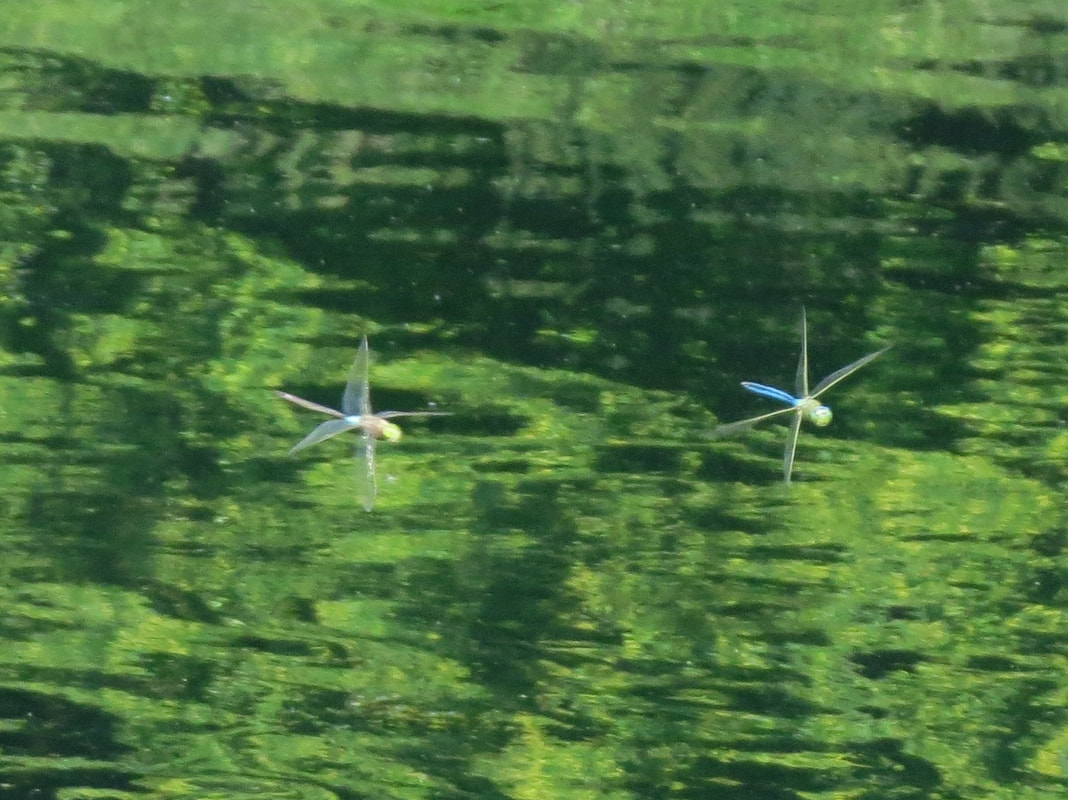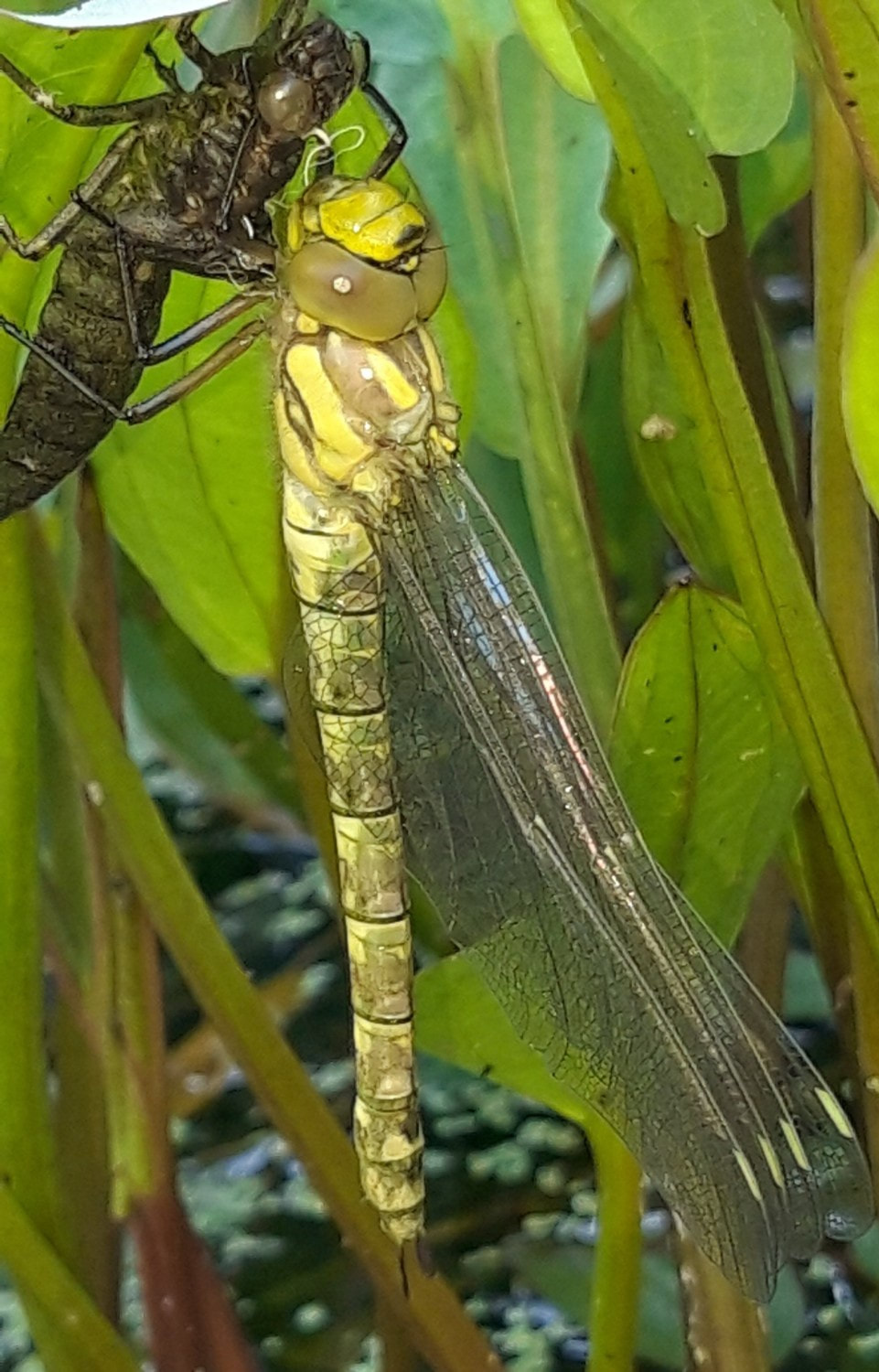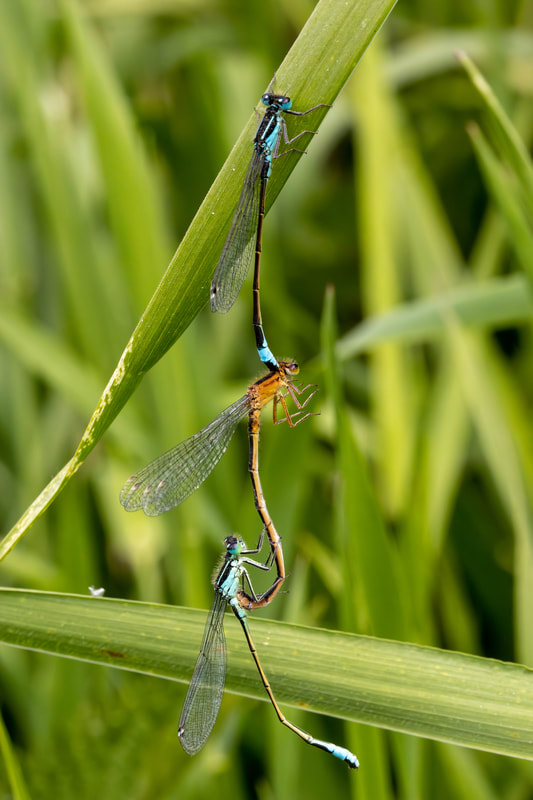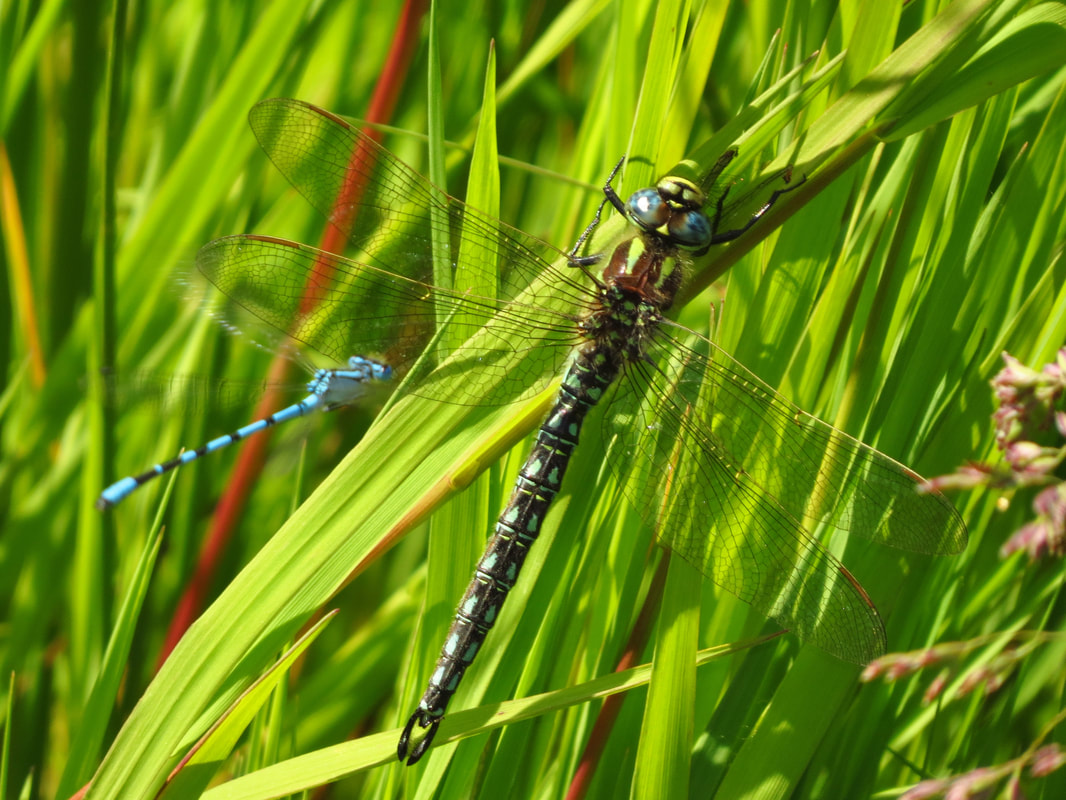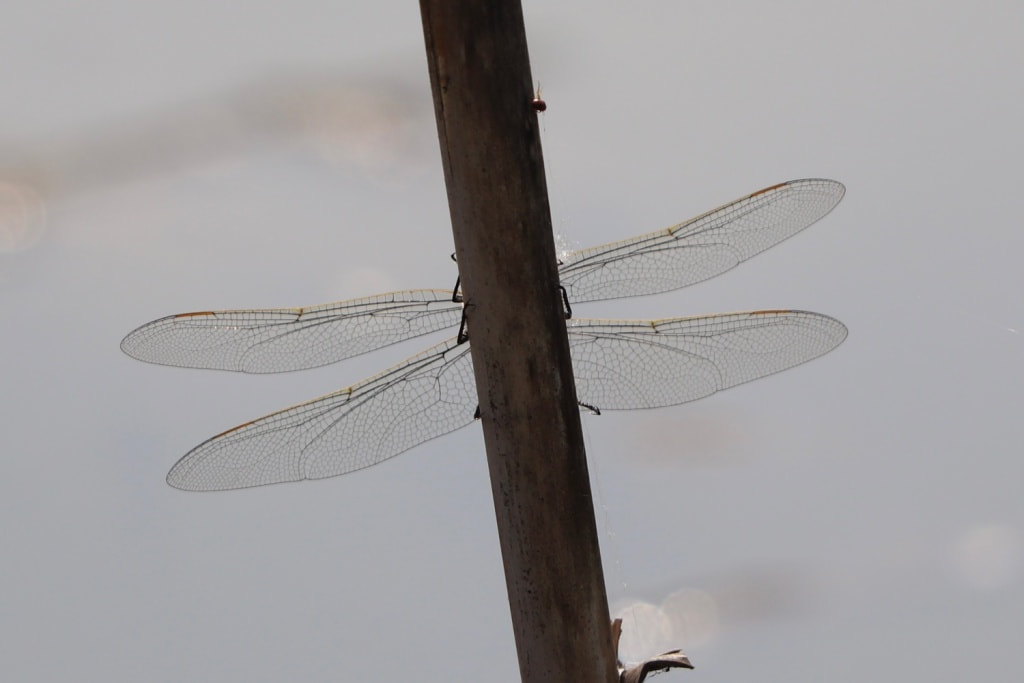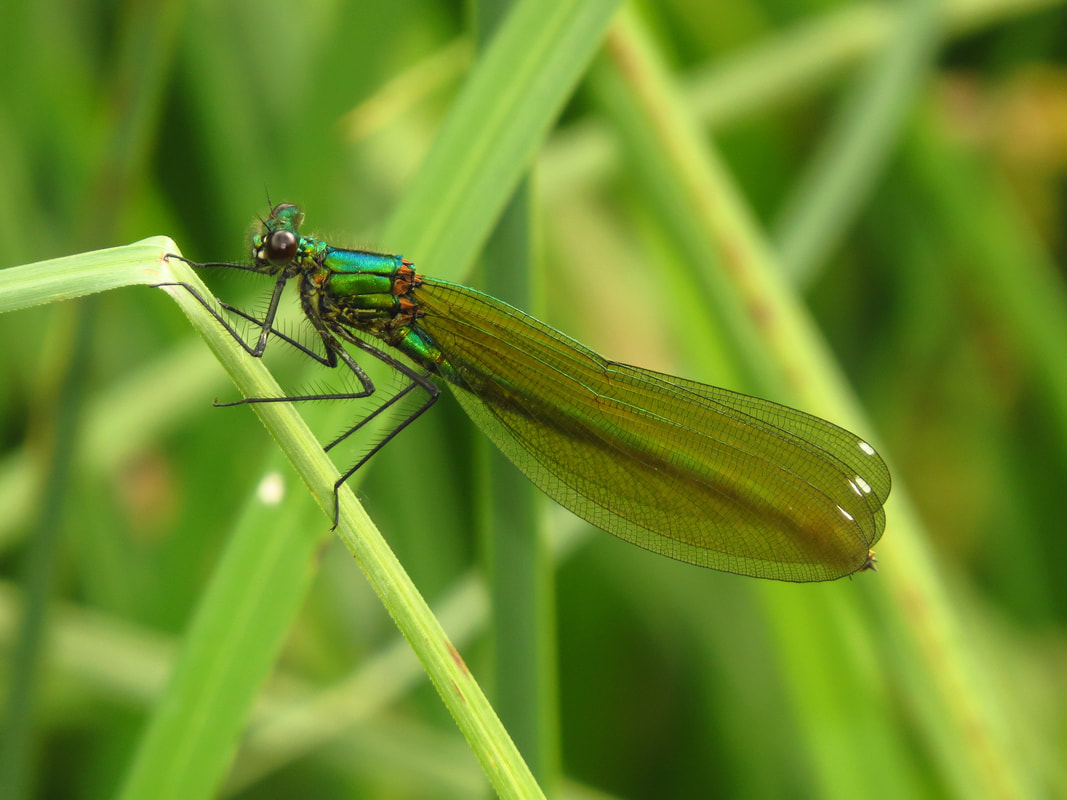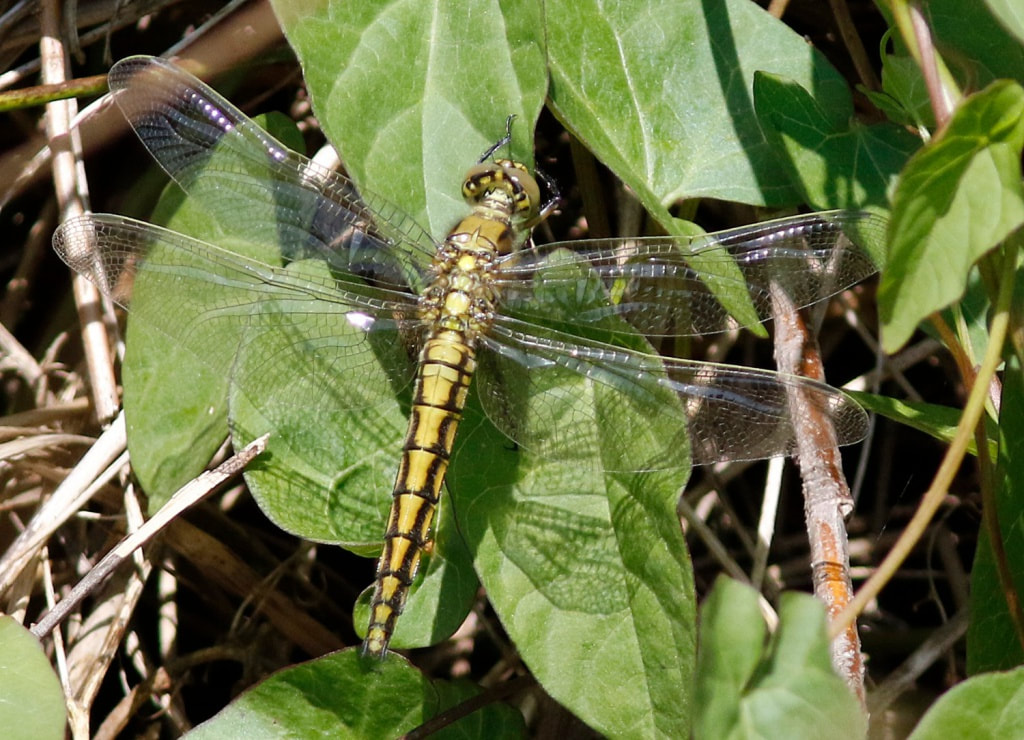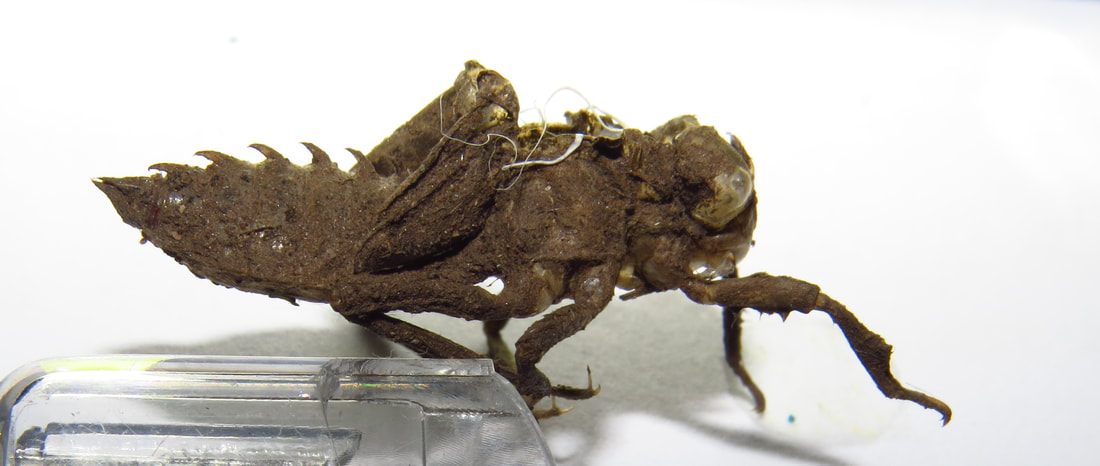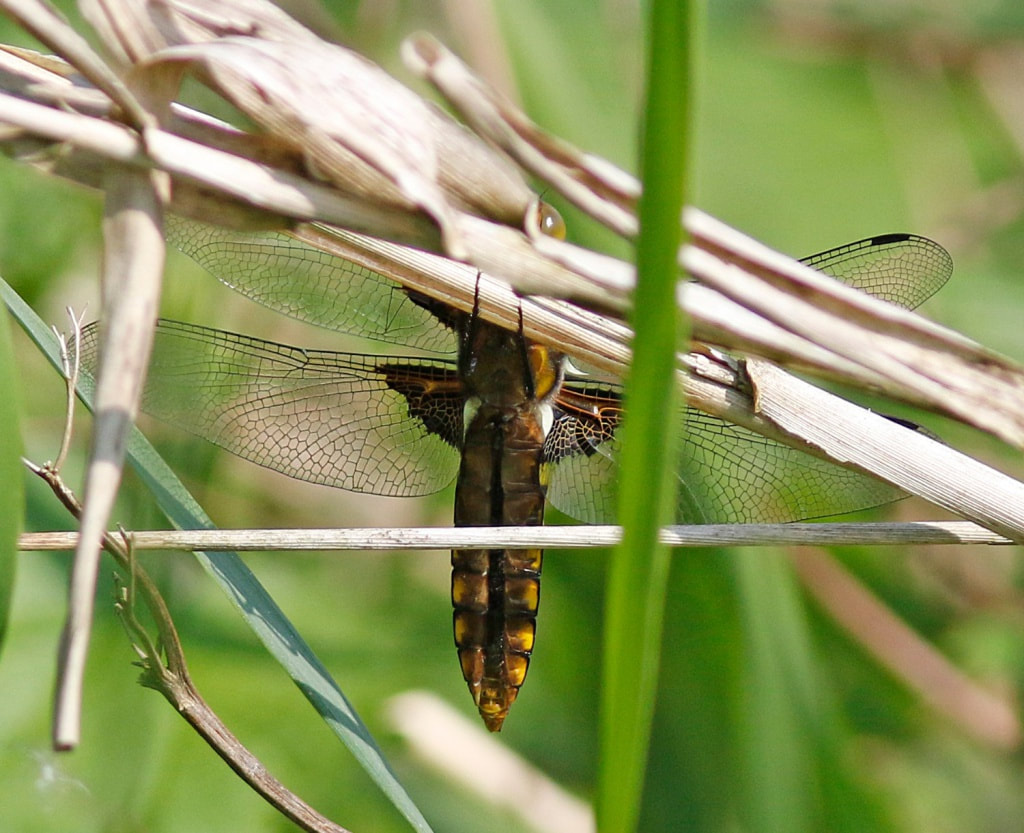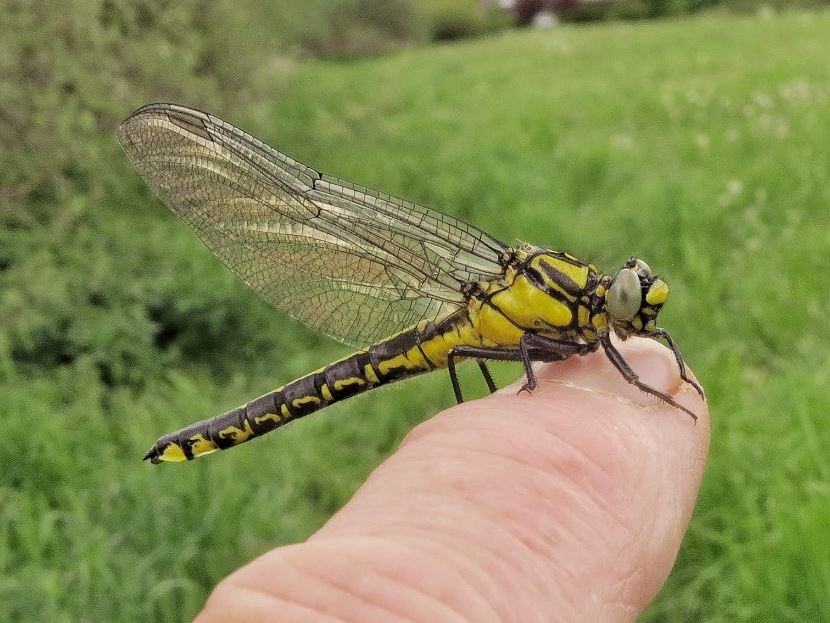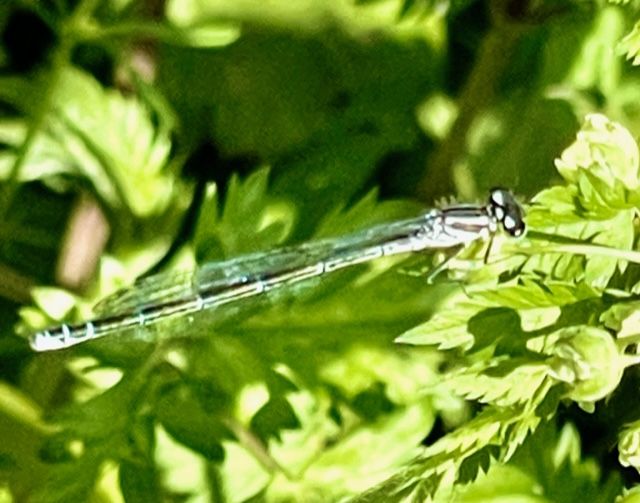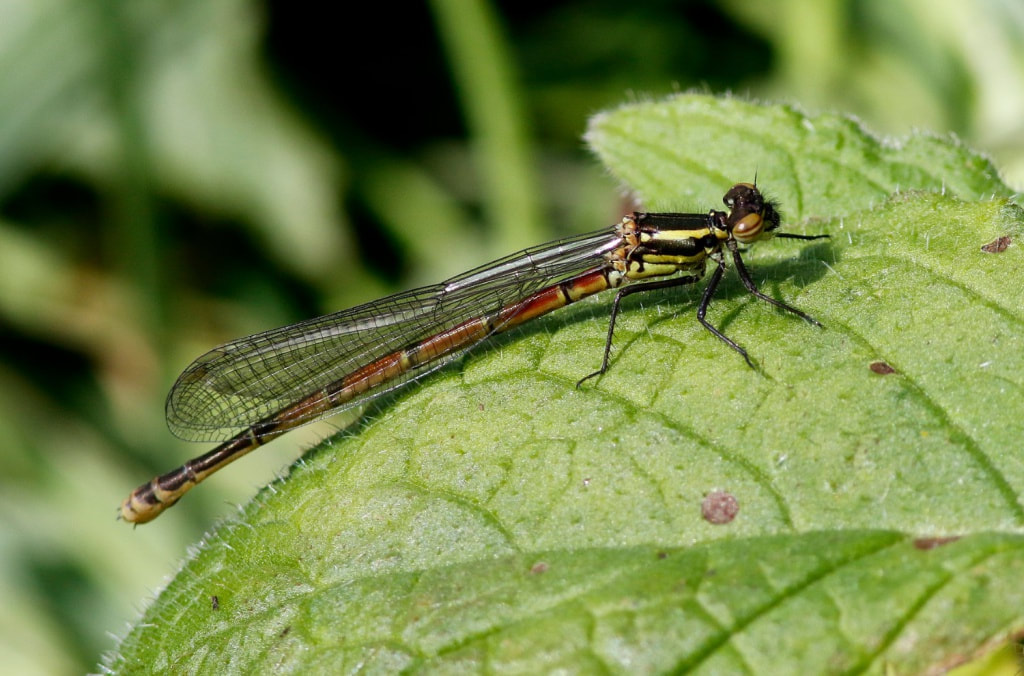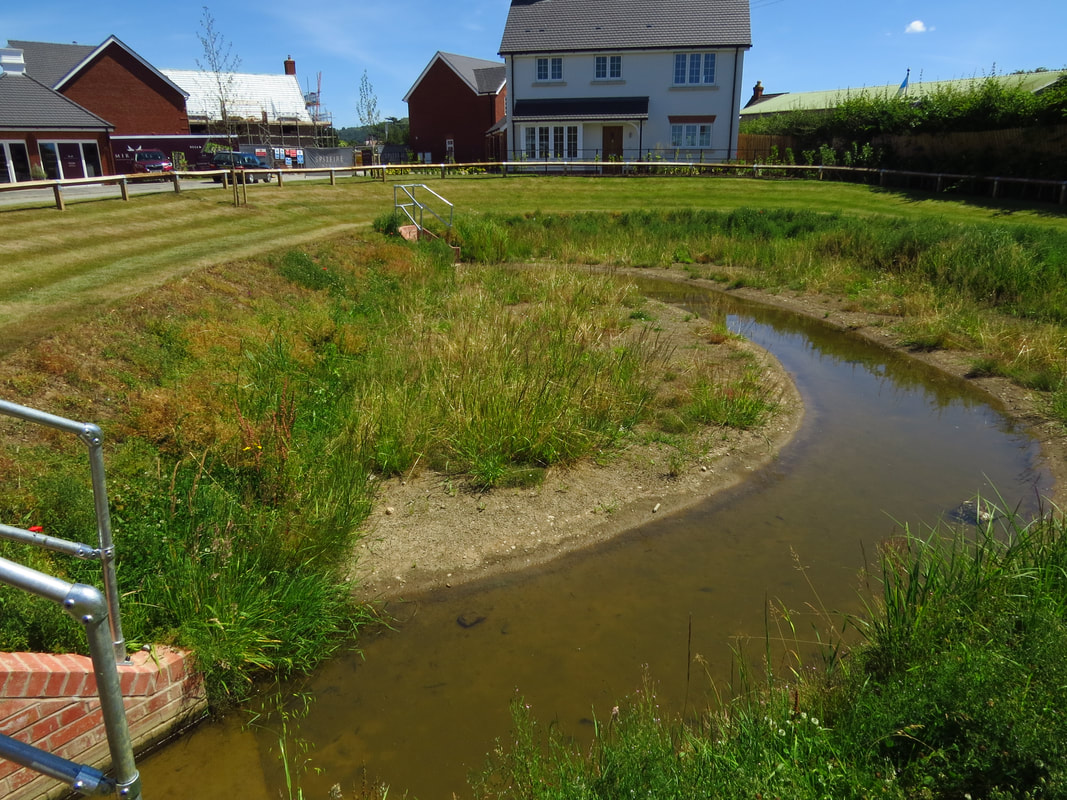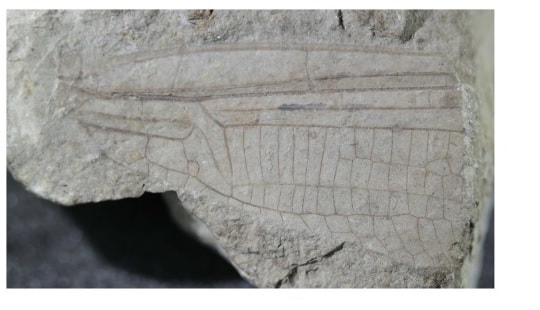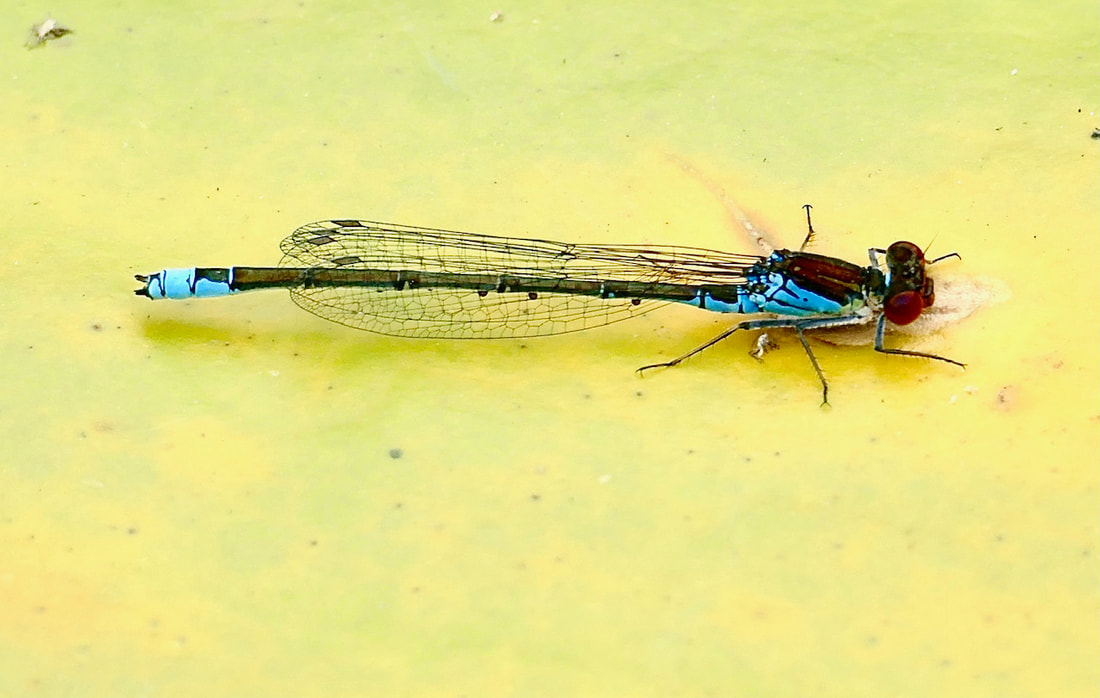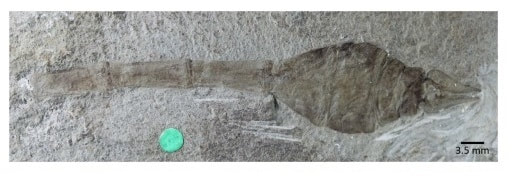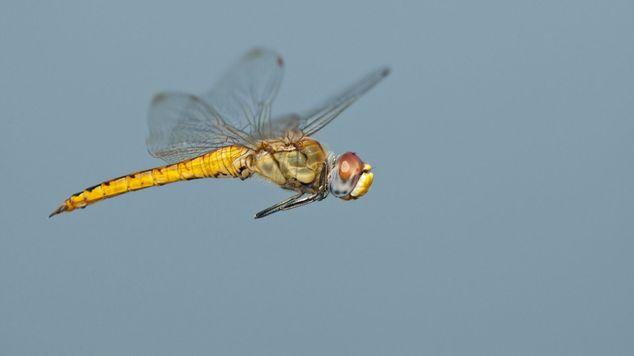Welcome to the Dragonflies of Worcestershire
Having trouble viewing the pages with a mobile? check if you can change the view using buttons at the very bottom of the page
This site is intended as a follow up to the book "The Dragonflies of Worcestershire", by Mike Averill, keeping recorders informed about the latest distribution of dragonflies in the county. Records are always welcome of any sightings and you can forward those records in a number of ways (See ways of recording information), one simple way is to email this site using the Send sightings / Contact tab on the top bar. Unusual sightings or queries can also be sent in the same way and Mike will happily answer them
Aimed at the flying season, this site is most active from April to November but any out of season sightings are also welcome- Willow Emerald scars for instance
The site also contains information about where to see dragonflies and what is going on in the county and is geared towards monitoring the flying season
If you want identification help try the British Dragonfly Society ID Page Here
What's on this front page?
Headline News
The status of the Club-tailed Dragonfly in Worcestershire
On the Wing 2024 - what to look for
On the Wing A look back at the 2023 Sightings and emergences
Dragonfly Buzz- science news about Dragonflies
All the first sighting dates for each species are in the table at the bottom of this page
All the annual accounts are found under the more tab
There are distribution maps on this site for the years 2014-2018 but now that all dragonfly records go through iRecord, the best place to look at records and maps since then is on iRecord where you can find activities for the current year for Worcestershire at
https://irecord.org.uk/activities/summary?group_id=2739&implicit=
and at
https://irecord.org.uk/activities/summary?group_id=2507&implicit=
for all records since iRecord began –
if you need help to see these activities drop me a line on the contact box
This site is intended as a follow up to the book "The Dragonflies of Worcestershire", by Mike Averill, keeping recorders informed about the latest distribution of dragonflies in the county. Records are always welcome of any sightings and you can forward those records in a number of ways (See ways of recording information), one simple way is to email this site using the Send sightings / Contact tab on the top bar. Unusual sightings or queries can also be sent in the same way and Mike will happily answer them
Aimed at the flying season, this site is most active from April to November but any out of season sightings are also welcome- Willow Emerald scars for instance
The site also contains information about where to see dragonflies and what is going on in the county and is geared towards monitoring the flying season
If you want identification help try the British Dragonfly Society ID Page Here
What's on this front page?
Headline News
The status of the Club-tailed Dragonfly in Worcestershire
On the Wing 2024 - what to look for
On the Wing A look back at the 2023 Sightings and emergences
Dragonfly Buzz- science news about Dragonflies
All the first sighting dates for each species are in the table at the bottom of this page
All the annual accounts are found under the more tab
There are distribution maps on this site for the years 2014-2018 but now that all dragonfly records go through iRecord, the best place to look at records and maps since then is on iRecord where you can find activities for the current year for Worcestershire at
https://irecord.org.uk/activities/summary?group_id=2739&implicit=
and at
https://irecord.org.uk/activities/summary?group_id=2507&implicit=
for all records since iRecord began –
if you need help to see these activities drop me a line on the contact box
Ever wondered what happens to all the dragonfly records that you send in?
Locally that data is used by the Biological Records Centre at Worcester to answer queries about the impact of any land use changes. Nationally the whole of the country's data is used to assess how dragonflies are doing on a regular basis. See the item in Dragonfly Buzz (Bottom of this page) about how the Small red-eyed Damselfly has affected other native species as it colonised the UK
The British Dragonfly Society has produced The State of Dragonflies 2021 and you can see the full document here
Headline information from this report says that Trend analyses carried out by the UK Centre for Ecology & Hydrology for this BDS show that 19 of our resident and/ or regular migrant species (41%) have significantly increased in occupancy since 1970. These included common and/or widespread species and scarce and/or localised species, as well as five new colonists. Just five (11%) of our resident and regular migrant species have shown significant declines overall. One of these is a widespread damselfly, two are predominantly upland and/or northern species, and two are specialists of seepages, pools and small streams. In addition, one scarcer migrant has shown some signs of a decline, though appearances have always been somewhat erratic. Most of these changes are likely to be down to Climate change. For Worcestershire, it means that we now have 33 species recorded, with 9 new species since 1995. But there are fears that the commoner species may be declining so it is important to record all the dragonflies that you see on a field visit including the common ones.
Locally that data is used by the Biological Records Centre at Worcester to answer queries about the impact of any land use changes. Nationally the whole of the country's data is used to assess how dragonflies are doing on a regular basis. See the item in Dragonfly Buzz (Bottom of this page) about how the Small red-eyed Damselfly has affected other native species as it colonised the UK
The British Dragonfly Society has produced The State of Dragonflies 2021 and you can see the full document here
Headline information from this report says that Trend analyses carried out by the UK Centre for Ecology & Hydrology for this BDS show that 19 of our resident and/ or regular migrant species (41%) have significantly increased in occupancy since 1970. These included common and/or widespread species and scarce and/or localised species, as well as five new colonists. Just five (11%) of our resident and regular migrant species have shown significant declines overall. One of these is a widespread damselfly, two are predominantly upland and/or northern species, and two are specialists of seepages, pools and small streams. In addition, one scarcer migrant has shown some signs of a decline, though appearances have always been somewhat erratic. Most of these changes are likely to be down to Climate change. For Worcestershire, it means that we now have 33 species recorded, with 9 new species since 1995. But there are fears that the commoner species may be declining so it is important to record all the dragonflies that you see on a field visit including the common ones.
Do you enter records via the BTO Birdtrack? Many of these records cannot be accepted because the National Grid reference is too vague, so please check your preferences details in Birdtrack and ensure that your name is not anonymous also when you choose a location use the POINT in Drawing Tools to pinpoint the location rather than the path or Polygon
How is the Club-tailed Dragonfly doing at Bewdley, Worcestershire.
Click here to see how many Club-tails (Gomphus vulgatissimus) have emerged in the long running transect count. . Please report any sightings especially if you see any near the River Avon
Click here to see how many Club-tails (Gomphus vulgatissimus) have emerged in the long running transect count. . Please report any sightings especially if you see any near the River Avon
Recording the commoner Wildlife
People don't record the commoner animals, we have very few records of house mice for instance, and so the Wildlife Trust is running a spot the common species in your area, and this year we are still looking for Broad-bodied chasers and Large Red Damselflies as well as some new subjects like Mistletoe and Goosander.
https://www.worcswildlifetrust.co.uk/wildlife-sightings
People don't record the commoner animals, we have very few records of house mice for instance, and so the Wildlife Trust is running a spot the common species in your area, and this year we are still looking for Broad-bodied chasers and Large Red Damselflies as well as some new subjects like Mistletoe and Goosander.
https://www.worcswildlifetrust.co.uk/wildlife-sightings
Worcestershire’s 31st Dragonfly/Damselfly found - this time not a migrant dragonfly but the near threatened --------- Scarce Blue-tailed Damselfly
A new species for Worcs, this time a damselfly appeared at Feckenham in August 2020. This is a species that was predicted as likely to get to Worcestershire but it was expected to be found in one of the gravel pits first. As its name suggests it is like the Blue-tailed which is ubiquitous in the county but this new species is associated with heathland or semi natural habitats like recent gravel workings. They often go for what seems like very temporary habitat such as water filled wheel ruts.
Look for the way the blue tail is slightly moved down the abdomen compared to the standard blue-tail.
Immature females are a striking orange colour which stands out from other blue-tails with which they can be found. The flight season doesn't normally go very far beyond the end of August
A second site was found at Ryall in 2021 and is proving to be a strong colony in 2022 and 2023
Unfortunately Ryall gravel pits are not open access and are operational in the week
Photo – Andy Warr
Look for the way the blue tail is slightly moved down the abdomen compared to the standard blue-tail.
Immature females are a striking orange colour which stands out from other blue-tails with which they can be found. The flight season doesn't normally go very far beyond the end of August
A second site was found at Ryall in 2021 and is proving to be a strong colony in 2022 and 2023
Unfortunately Ryall gravel pits are not open access and are operational in the week
Photo – Andy Warr
Worcestershire’s 32nd dragonfly added to the list.
Quite unexpectedly the Keeled Skimmer has been seen for the first time in August 2022. Once again Andy Warr proves to be the man on the spot when he managed to photograph three males at a gravel pit near Upton. Worcestershire has always been in a bit of a blank spot for this species despite it being widespread in Europe. It likes streams, ditches and runnels as well as acid bogs, flushes and seepages. The exact location cannot be disclosed because it is a working gravel pit with restricted access.
Anyone going there would obviously do so at their own risk
photo Andy Warr
Quite unexpectedly the Keeled Skimmer has been seen for the first time in August 2022. Once again Andy Warr proves to be the man on the spot when he managed to photograph three males at a gravel pit near Upton. Worcestershire has always been in a bit of a blank spot for this species despite it being widespread in Europe. It likes streams, ditches and runnels as well as acid bogs, flushes and seepages. The exact location cannot be disclosed because it is a working gravel pit with restricted access.
Anyone going there would obviously do so at their own risk
photo Andy Warr
Things to look forward to in 2024
The 33rd species recorded in the County, the Willow Emerald will no doubt expand rapidly this year after suddenly appearing in 2022. This species is the second most successful damselfly to colonise England in recent times following after the Small Red-eyed Damselfly. As the name implies the Willow Emerald is associated particularly with willow growing close to water. You can even look for this species in the winter as the female leaves characteristic scars on willow branches as it lays its eggs in to the bark. Young branches which hang over water are favoured and the Dragonfly society will accept records of these scars.
The species may be confused with other emerald damselfly species, but can be distinguished by:
- Large, pale pterostigma (wing spots).
- Prominent green spur on the side of the thorax.
- No blue colouration in males.
- Pale white appendages of the male
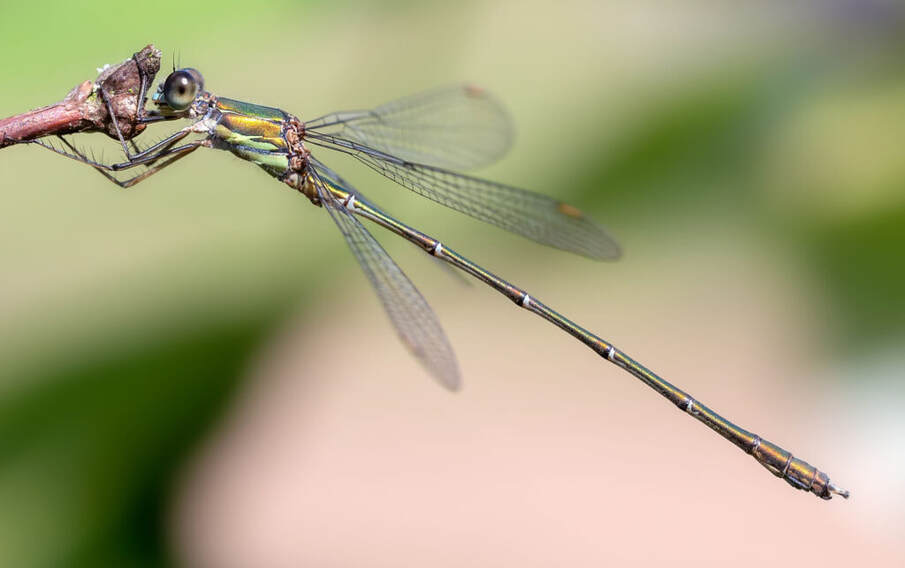
One way to look for the presence of the Willow Emerald is to search willow branches that are over-hanging water for scars where the females have laid eggs.
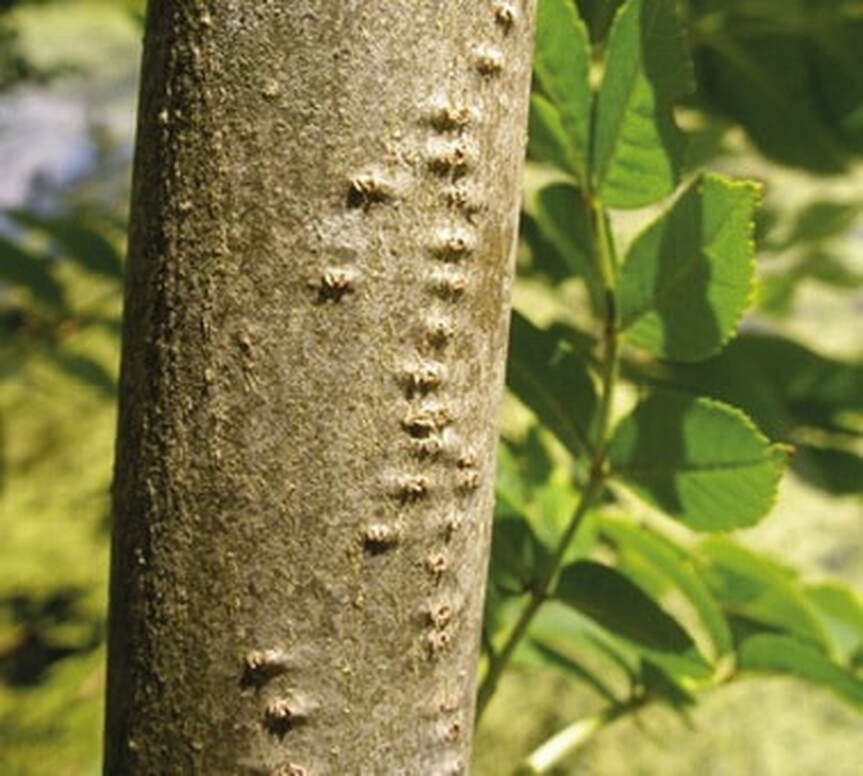
The Norfolk Hawker Aeshna isoceles is one of two brown hawker dragonflies found in Britain, Males and females look similar and have a yellow triangular mark near the top of the abdomen. The Norfolk Hawker was historically restricted to the Broadlands of Norfolk and north east Suffolk. Over the past couple of decades it has spread and can now also be found in other places including Kent, Cambridgeshire, the London Wetland Centre, Hertfordshire, Dorset and Devon.
Already in North Wiltshire, Berkshire and now Shropshire, will this species arrive in Worcestershire this year?
Already in North Wiltshire, Berkshire and now Shropshire, will this species arrive in Worcestershire this year?
On the Wing 2024
23 July 2024 you might wonder whether this Golden-ringed Dragonfly, seen by Brett Westwood in Eymore Wood, was male or female. With the detail showing nicely we can see that this female’s rear inner edge of the hind wing is rounded, rather than notched as in the male
20 July 2024 John Lane, from the Migrant Hawker garden in Malvern, wished me to add that his small pond has actually had 26 Large Red Damselflies emerging so far. Very cute they are too!
19 July 2024 That garden in Malvern has done it again and produced the first Migrant Hawker. What is that attracts them, after all there is only a small pond, maybe a warm sunny wall!
29 June 2024 Now we have had Willow Emerald for a few years the first emergence date is getting earlier and earlier so today Andy Warr saw some at Throckmorton
29 May 2024 The first reported Brown Hawker was seen today by Des Jennings on the Salwarpe at Upton Warren. As I haven’t had any photos of adult Brown Hawkers I am forced to show this poor shot which once again shows all you need for his species, brown wings and blue in the side of the abdomen, so not a Norfolk Hawker!
21 June 2024 We all take a few duff photos, including me, but this one I am pleased to say still shows that vital I.D. feature, the four spots as in the Four Spotted Chaser, proving you don’t need great shots to confirm a species!
21 June 2024 Common Blue Damselflies don’t like Emperors egg laying in their location, maybe they know of the possible threat that Emperor larvae would be to their own offspring, Azure Damselflies on the other hand are happy to share a good oviposition site
19-June 2024 Hidden amongst some Red-eyed Damselflies at Hartlebury Riverside Pool today was a Small Red-eyed Damselfly. It was unexpected but it was the earliest to be seen ever in Worcs.
16 June 2024 Not always easy to spot, the Emerald Damselfly was seen by Andy Warr today at Ryall
2nd June 2024 In quiet areas of lakes and on ponds you may wonder if the mass of damselflies, all egg-laying still in tandem, are Azure or Common Blue Damselflies? Azure, like White-legged Damselflies, very often egg lay with the male still attached and just taking a ride on the female. They are guarding their partners but staying attached, unlike a Broad-bodied chaser male which will watch from a distance and race in if another male appears. Common Blue Damselflies tend not to do this in close mats like Azures
Thanks for the Shot to Jill Orme
Thanks for the Shot to Jill Orme
2nd June 2024 The Hairy Dragonfly is doing really well this year with plenty of records in the south including Kemerton Reserve but there are outliers from Trench Wood and now Cleeve Prior in the east. This difficult shot by Jill Orme taken as the male threads itself amongst the rushes, shows the characteristic thoracic and Abdominal markings
1st June 2024 Always first emerging a bit later than Common Darters, the Ruddy Darters are out now adding a bright photographic subject with their pillar box red colour. This female was seen by Andy at Ripple
30th May 2024 The Fold is a great place to have a coffee and enjoy some dragonflies, but they have had the first Southern Hawker emerging today, seen by Roger Mason at the carpark pond.
19th May 2024 Michael Fletcher was fortunately on had to snap this freshly emerged Lesser Emperor at Ripple today. We have had proof of breeding before at this site but it is excellent that the site continues to attract this species
19th May The pools at Upton-upon Severn new roundabout are proving very attractive to early colonisers. Although only a couple of years old, Scarce Blue-tailed was seen as early as last year. Today, Roger Mason has seen the earliest emerging Common Darter since 2009
15 May 2024 Although a Black-tailed Skimmer larvae was seen at Ripple earlier in the year, today Andy has found the first one on the wing
15 May 2024 Not many Damselflies have markings in the eyes but The Large Red Damselfly does. These may be to do with being able to detect certain colours of prey at different angles to the head. The three Ocelli in the middle are also shown well in this shot from Jill Orme
14 May 2024 A damselfly that is often seen a long way from the river, the White-legged Damselfly, was seen by Carol Taylor at the new Trust reserve at Green Farm, Wichenford today
11 May 2024 Not wanting to miss out on the grand Ripple emmergences, Emperor larvae cases were all that Andy Warr could find for this species but he did find 11 other adult species on the day. This makes it the earliest date ever for the Emperor in Worcestershire
10 May 2024 Ripple is proving to be very productive this year with the first County Scarce Chaser, seen by Roger Mason at the riverside. The underside shot shows well that it is only the hind wings that have the dark triangle in the wing base
07 May 2024 There is a huge amount of change going on at the Ryall Gravel pit as it is a working site, but Andy Warr managed to find some Scarce Blue-tails which had survived the winter floods, like this orange form of the female
07 May 2024 Although the River Severn has barely dropped out of flood conditions and the bankside vegetation has hardly developed yet, the first Clubtail was emerging today at Stourport-on-Severn Marina today. Only the second record in the UK so far
06 May 2024 One of the earliest dates for the Four-spotted Chaser today when this dragonfly was found in a garden at Westmancote - thanks to Martin Chapman
01 May 2024 A warm sunny day amongst many dull days has prompted a Banded Demoiselle out at Upton Warren. Photographed by Des Jennings this one must have been out a day or two as it is fully coloured
01-May 2024 The first Dragonfly, a Broad-bodied Chaser was seen today by Mervyn Needham at Wilden Marsh
30 Apr 2024 It is obviously an advantage to be in the south of the county when looking for first emergences of Damselflies as Andy Warr has picked up Azure and Red-eyed Damselfly today- see his photos below
21 Apr 2024 The first Beautiful Demoiselle was recorded at Hurcott Pool today, it wasn’t the earliest for the species but it was only two days later than the record
21 Apr 2024 A real surprise today as a female Hairy Dragonfly was spotted by Ion Riley at Trench Wood. It’s hard to know where that might have come from as the pond at Trench Wood hardly seems big enough to attract the species
20 Apr 2024 A few warmer days and it seems that several species couldn’t wait to emerge. Firstly a Blue-tailed Damselfly at Ripple, seen by Andy Warr
20 Apr 2024 Also seen by Andy at Ripple was the first Common Blue Damselfly, and like the Blue-tailed the earliest record for the species since at least 2007
12 Apr 2024 It seemed that the first damselfly to emerge this year was just waiting for the sort of weather we had on the 12th April-which was the hottest day of the year so far, following a long period of below average temperatures. In the end two locations had a Large Red Damselfly so the 2024 season has kicked off with what were quite early records in the end. Photo:Amy Flemming
A look back to what was on the wing in 2023
|
03 November 2023 UK news is that there have been sightings of the American Green Darner in the Scilly Isles, firstly on the 19 Oct and now the 3 November. This is only the second time that they have been recorded to have reached the UK. How they arrive on the back of stormy winds, undamaged is amazing. The giveaway ID feature is the bullseye mark on top of the facial frons
24 October 2023 As Common Darters age and get darker and redder, there is always the problem of whether it could be a Ruddy Darter as below. The legs look black and there is red on the face, plus the thorax looks dark
24 October 2023 The same individual viewed from the front with a bit of flash shows the legs to have a pale stripe, the thorax does have a pale panel and there is no mexican moustache so it is a Common not a Ruddy Darter
06 October 2023 John Taylor sent this infrared photo of a Southern Hawker in vegetation in Trench Wood. Is anyone else experimenting with infrared or ultraviolet photos and insects? Dragonflies are not attracted by flower colour and most of their colour spectrum is in the blue range. Humans have three colour cones to see our light spectrum but some dragonflies have up to 30 colour cones.
16 Sept 2023 Rather late but this female White-legged Damselfly was seen at Ripple by Andy Warr, making it the latest record for the species in recent years
01 Sep 2023 Another case of mistaken identity, this time a male Scarce Blue-tailed and a female Small Red-eyed damselfly. Seen by Andy Warr at Ryall
24 August 2023 Willow Emeralds have been seen at Grafton Wood this summer but with a resident population of the common Emerald, Lestes sponsa, there might well be room to get it wrong - as these two males of both species have done
02 August 2023 Whilst checking the new SUDS site at Lea Castle, Kidderminster today, it was a surprise to find some Scarce Blue-tailed Damselflies. Around 10 females and 5 males seen. This site is new and so makes an ideal first location for this species. Please check any other new development storm water projects near you. The new storage pool by housing at the old Lea Castle Hospital site shown below
20 July 2023 There was mention last year about the new ponding areas associated with new developments that are being built and what an opportunity they are for wildlife habitat. The one mentioned last year at Eckington has already had emerging Emperors
02 July 2023 Although we have had a few Willow Emerald records using the scars the egg laying females leave on plant stems, the first adult this year was seen today in Grafton Wood by Andy Warr
23 Jun 2023 We have had some very fine weather recently so perhaps no surprise that Andy Warr should see the earliest recorded Small Red-eyed Damselfly at Ripple today
16 Jun 2023 Missing for two years, the occasional visitor, the Red-veined Darter has been seen at the gravel pits in the Clifton area by Andy Warr
15 Jun 2023 Cryptic colouring and secretive behaviour doesn’t help finding Emerald Damselflies, but Keith Falconer spotted this one at Bransford
12 Jun 2023 Normally out before Common Darters the Ruddy Darter (below) has come second this year; Keith Falconer saw this one at Bransford Golf course today
05 June 2023 The Wyre Forest is the only reliable location to find a Golden Ringed Dragonfly. This larval, case was found but no sign of the adult today
04 June 2023 The first period of early emerging dragonflies is almost over now with Clubtails nearly all having flown and we move in to the middle season with the later species like this Common Darter being seen today by Andy Warr.
28 May 2023 Just to add another river observation, this time the Severn at Bewdley where there were clouds of Banded Demoiselle and immature White-legged damselfly (ph below), which is a good sign for our precious river
21 May 2023 Yesterday we were seeing a Lesser Emperor at Ripple but today the first adult Blue Emperor was seen by Andy Warr, and still very fresh by the colours.
20 May 2023 Just a glimpse of an Emperor was enough for Andy Warr to decide this was a Lesser Emperor at Ripple and the earliest appearance we have had in Worcs..
14 May 2023 The benefit of someone having a patch is that they can get a better handle on the seasonal changes and not miss any early emergences. Andy Warr keeps an eye on the Ryall Gravel Pit area and has found that last years Scarce Blue-tailed Damselflies are still there and already emerging. Interestingly it’s the first record in the UK so far on iRecord. Seeing the early emergences does give a chance to see the fantastic orange form aurantiaca
13 May 2023 Uckinghall is the place to be for early sightings at the moment with White-legged Damselfly being spotted by M Schilling
07 May 2023 We are getting one good day followed by one unsettled day at the moment but today was ideal for those dragonflies like this one, waiting to emerge. A Four-spotted Chaser - Andy Warr at Ripple
03 May 2023 Upton Warren clocks the first Banded Demoiselle today with Des Jennings and it is interesting that they occur with the Beautiful demoiselle on the River Salwarpe
03 May 2023 A few warm days in May can certainly step up the damselfly emergence rate and Common Blue damselflies were seen at Spetchley Park for the first time by Roger Mason today
23 April 2023 Something about the River Salwarpe often produces the earliest Beautiful Demoiselle or is it that its the most visited site in Worcestershire. Whichever it is, Jared Tibbetts saw it.
The photo below shows the pegs behind the eyes that are so useful identifying this species in the larval form and continue in the adults 10 March 2023 the search for Willow emerald scars has produced a new site not far from Grafton Wood and this time the scars were on Hazel, showing the variety in plants that they will lay their eggs in. Photo Sam Macvie
|
25 October 2023 Initially thinking this Migrant Hawker was perched on a seed head, there was surprise when the seed head eventually crawled away- it was a Ruby Tiger Moth caterpillar
14 October 2023 Another location for Willow Emerald today at Throckmorton, where Andy Warr found egglaying scars and some adults despite the sudden cooler day. Especially of note was the finding of a female egglaying in to the main stem of a leaf
02 October 2023 Ever wondered what those smashing birds, Little Grebes are looking for when they dive for so long, Well this one came up with a Hawker Dragonfly, probably an Emperor. Photo by Paul Jackson at Kemerton
03 Sept 2023 Quite a leap to the new most westerly record of the Willow Emerald in Worcestershire at Kyre Pak, Tenbury, this is actually the second most westerly record in the UK so far.
26 August 2023 This freshly emerged female Red-veined Darter is in perfect condition and Andy Warr’s shot from Ryall. shows the key features perfectly, the blue undersides to the eyes, the Mexican moustache and thick edged pterostigma
15 August 2023 A record of a Lesser Emperor at Kemerton is a reminder that this fantastic reserve is always in need of observers making good use of the hide which extends right out in to the lake. Normally open to walkers from the public path you can park in Kinsham village and follow the footpath
02 August 2023 On checking the larval cases collected at Lea Castle on the 2nd, one was a Scarce Blue-tailed so it looks like those adult damselflies were laid last year
29 July 2023 Another site at the new Upton roundabout has already attracted Scarce Blue-tailed Damselflies according to Andy Warr. These still very scarce damselflies are most likely from the nearby gravel pits
22 July 2023 Elizabeth Rose sent this photo in showing what appears to be a male Emperor egg-laying. Females can develop the blue abdomen especially if they are getting on a bit like this one which shows its age in the tattered edges to the wings
26 June 2023 The first authenticated record of Migrant Hawker has come in from Malvern and it’s from John Lane’s remarkable garden. Often getting the first records for dragonflies and butterflies which probably haven’t actually emerged there, the individuals are looking for a quiet spot as they mature and get their colours. This is actually the earliest Migrant Hawker in recent years
13 Jun 2023 There was a report of lesser Emperor at Ripple around the 21ST June, There was also one at Harvington Hall fishing pool on the 13th. It stayed for about 20 mins and jousted with the local Blue emperor
14 Jun 2023 The larger hawkers are appearing now firstly with a Brown Hawker on the 10th June and today with this Southern Hawker found by Andy Warr
06 Jun 2023 This is an interesting coupling seen by Steve Horton. Two males are attached to a female top and bottom but it’s the bottom male that has sneaked in to complete the act forcing the female to adopt an unusual attitude. I wonder if the lower male actually lost his grip on the female which led to that arrangement, then the upper male got involved!
03 June 2023 The field visit to Ripple was blessed with ideal weather so it was a fantastic chance to see 13 species in sunny windless locations. Scarce Chasers and Clubtails and even a few Hairy Dragonflies obligingly posed for photos (see below). Thanks to Andy Warr for showing us the best spots
29 May 2023 A puzzle- Someone sent this shot in and I wonder if you can tell what it is with only the wings showing. Fortunately dragonflies were originally classified according to wing structure, and the complex of cross veins and cells tell us this is an Emperor
24 May 2023 What’s going on with Worcestershire Rivers!. The fortunes of the river Stour and Avon seem to have reversed dragonfly wise. The Stour, once the dirtiest river in the county now has clouds of Banded Demoiselle emerging whilst the Avon has small scattered amounts.
20 May 2023 Its all go at Ripple right now with many species making their first appearance like this Black-Tailed Skimmer seen by Andy Warr
18 May 2023 How amazing that the first Scarce Chasers show on the same day at two different locations, the River Severn at Ripple and Hillditch pool, Hartlebury. That makes 11 years running now at Hillditch pool, showing that a small isolated colony can maintain itself with smallish numbers. The larval case below from Hillditch is distinctive in having those long curved dorsal spines
13 May 2023 Another first for Ripple is this Broad-bodied Chaser, and you don’t need to see the whole insect as the four brown wing bases unique to this species are shown from behind by Andy Warr
12 May 2023 we can be hopeful that Hairy Dragonflies will be seen at Ripple again this year as Andy Warr had found a larval case in one of the southern ditches on the site
11 May 2023 A cool spring has meant the river temperatures are low for the time of year. Although thunderstorms can produce a lot of cold water in to the system, Club-tails have started to emerge at Uckinghall according to Michael Fletcher.
05 May 2023 The second new species today was the Red-eyed damselfly. This female photographed by Andy Warr looks recently emerged.
05 May 2023 Also taking advantage of the warmer weather is the Azure Damselfly seen by Keith Falconer
28 April 2023 Not the earliest ever but still quite early considering the cool weather this spring, this Blue-tailed Damselfly photographed by Andy Warr
15 April 2023 Despite cool weather in April this year, the first Large Red emerged on the same date as last year. Probably helped by a warm garden pond-thanks to Andy Warr for this first record
|
12 July 2022 There are a growing number of new housing developments with water storage systems (Sustainable Urban Drainage Systems). These could be a new aquatic area for wildlife but do they hold water all the time. If you see a new one please let me know if it does. An example of a new one is the Warndon 6 on the Evesham road from Warndon / M5 roundabout. The photo below is a new site at Eckington
Dragonfly Buzz

Blue Dragonflies may be better prepared for Climate Change
The males of many animals go to extreme lengths to attract females developing exotic feathers in birds and shows of great strength in mammals and some insects. Some dragonflies develop a blue colouration called pruinescence which is actually a layer of a waxy substance (i.e. Broad –Bodied Chaser, Scarce Chaser and Keeled Skimmer). This has always been thought to simply be an attractant to females but research in to dragonflies in the USA shows that this actually also helps to deal with the long periods sat in the sun especially as it gets hotter with climate change
See article: https://www.sciencenews.org/article/male-dragonflies-wax-coats-warming-climate
The males of many animals go to extreme lengths to attract females developing exotic feathers in birds and shows of great strength in mammals and some insects. Some dragonflies develop a blue colouration called pruinescence which is actually a layer of a waxy substance (i.e. Broad –Bodied Chaser, Scarce Chaser and Keeled Skimmer). This has always been thought to simply be an attractant to females but research in to dragonflies in the USA shows that this actually also helps to deal with the long periods sat in the sun especially as it gets hotter with climate change
See article: https://www.sciencenews.org/article/male-dragonflies-wax-coats-warming-climate

Unexpected Find in the Winter
Jared Tibbetts had a surprise on the 8th Jan 2020, when he found what looked like 2 Blue-tailed damselflies at Hagley. But it was later when Andy Warr was checking twitter feeds, that he realised that they were not our common Blue-tailed Damselflies at all but the Asian/African species Ischnura senegalensis. This is often the most likely damselfly to be found at that time of year, especially as it was in a garden centre aquarium building. The Larvae are brought in with pond weeds and although they might emerge, they find themselves in the dead of Winter so no hope of surviving. It’s another species for Worcestershire but we can’t add it to the list considering how it got here. ( Ph Jared Tibbetts)
Jared Tibbetts had a surprise on the 8th Jan 2020, when he found what looked like 2 Blue-tailed damselflies at Hagley. But it was later when Andy Warr was checking twitter feeds, that he realised that they were not our common Blue-tailed Damselflies at all but the Asian/African species Ischnura senegalensis. This is often the most likely damselfly to be found at that time of year, especially as it was in a garden centre aquarium building. The Larvae are brought in with pond weeds and although they might emerge, they find themselves in the dead of Winter so no hope of surviving. It’s another species for Worcestershire but we can’t add it to the list considering how it got here. ( Ph Jared Tibbetts)
Dragonfly sightings 180 million years ago in Worcestershire
In 1845 fossils were found in an old quarry near Strensham that had a layer of clays ideal for showing the fine detail of insect wings. One of these early damselflies was Liassophlebiidae withersi and a fore-wing of the species was found. It’s usually only the wings that get preserved but in the same quarry a specimen of an abdomen was found which has been named as Liassophlebiidae clavigaster but without more being found of this second specimen, this description can only be tentative. This was a very significant find as not only was it one of the very earliest ancestors of modern damselflies but it proved that the often quoted extinction between the Triassic and Jurassic periods didn't include some creatures at least in that location. Remember that Worcestershire at the time was at the latitude of where Cuba is now.....20° North
In 1845 fossils were found in an old quarry near Strensham that had a layer of clays ideal for showing the fine detail of insect wings. One of these early damselflies was Liassophlebiidae withersi and a fore-wing of the species was found. It’s usually only the wings that get preserved but in the same quarry a specimen of an abdomen was found which has been named as Liassophlebiidae clavigaster but without more being found of this second specimen, this description can only be tentative. This was a very significant find as not only was it one of the very earliest ancestors of modern damselflies but it proved that the often quoted extinction between the Triassic and Jurassic periods didn't include some creatures at least in that location. Remember that Worcestershire at the time was at the latitude of where Cuba is now.....20° North
|
A new study – by the University of Exeter and the UK Centre for Ecology & Hydrology – used data from the British Dragonfly Society to see if the arrival of the new species-The Small Red-eyed Damselfly has caused native damselflies and dragonflies to decline.
The results showed most native dragonflies and damselflies were either found more often or were unchanged in areas colonised by the small red-eyed damselfly. However, two damselfly species might have been negatively affected, and more research is needed to investigate this. https://resjournals.onlinelibrary.wiley.com/doi/10.1111/icad.12630?af=R |
There is a new book called The Atlas of the Dragonflies and Damselflies of West and Central Asia, covering for the first time, a detailed overview of the distribution of the damselflies and dragonflies (Odonata) of West and Central Asia, an area covering nearly 8 million km². So if you are looking beyond Europe towards Asia this could be for you. Although not claiming to be an ID book there are 175 species covered with a photo and distribution map.
Bio-inspired robotics: learning from dragonflies
Bioinspired robotic models have developed a dual catapult system for activating the dragonfly nymph’s extendable mask. It had been thought that hydraulic pressure was responsible for operating the mask but this doesn’t have the power to operate the very rapid extension. Acting like a catapult, an internal elastic structure in the dragonfly’s head is activated, that is held by a muscle like a spring. According to the Kiel-based researchers, these types of systems are widespread in the animal kingdom and can be found, for example, in grasshoppers, cicadas or Mantis shrimp. Here
Bioinspired robotic models have developed a dual catapult system for activating the dragonfly nymph’s extendable mask. It had been thought that hydraulic pressure was responsible for operating the mask but this doesn’t have the power to operate the very rapid extension. Acting like a catapult, an internal elastic structure in the dragonfly’s head is activated, that is held by a muscle like a spring. According to the Kiel-based researchers, these types of systems are widespread in the animal kingdom and can be found, for example, in grasshoppers, cicadas or Mantis shrimp. Here
Its true Damselflies consume thousands of sometimes annoying insects
A study led by the University of Turku, Finland has attempted the difficult exercise of assessing how many insects, damselflies consume. Using four species, C. hastulatum, C. pulchellum and E. cyathigerum & C lunulatum they found that over two months they consumed on average 870 gms of insects, mainly chironimids. Each species consumed 29-66 % of their body weight during its life. Their body weights being 33.9 to 35.4 mg’s
Although obviously doing a great job it was pointed out that this was only a small proportion of the insects available and that dragonflies would be the next area of research.
https://doi.org/10.1111/1365-2656.13184
A study led by the University of Turku, Finland has attempted the difficult exercise of assessing how many insects, damselflies consume. Using four species, C. hastulatum, C. pulchellum and E. cyathigerum & C lunulatum they found that over two months they consumed on average 870 gms of insects, mainly chironimids. Each species consumed 29-66 % of their body weight during its life. Their body weights being 33.9 to 35.4 mg’s
Although obviously doing a great job it was pointed out that this was only a small proportion of the insects available and that dragonflies would be the next area of research.
https://doi.org/10.1111/1365-2656.13184
New Proposal about how dragonfly wings developed
Most Insect classification is based on wing morphology but dragonflies have always caused disagreement as to how they formed. A new approach is put forward by Trueman & Rowe claiming to solve several long standing issues. They reinforce some theories that the dragonfly ancestor began when wings developed from two fused legs originally from a crustacean. Later damselflies developed and from them true dragonflies see here
Most Insect classification is based on wing morphology but dragonflies have always caused disagreement as to how they formed. A new approach is put forward by Trueman & Rowe claiming to solve several long standing issues. They reinforce some theories that the dragonfly ancestor began when wings developed from two fused legs originally from a crustacean. Later damselflies developed and from them true dragonflies see here
ED: All good fun but when is someone going to come up with an APP that identifies dragonflies from a wing scan?
Someday, cicadas and dragonflies might save your sight. The key to this power lies in their wings, which are coated with a forest of tiny pointed pillars that impale and kill bacterial cells unlucky enough to land on them. Now, scientists report they have replicated these antibacterial nanopillars on synthetic polymers that are being developed to restore vision. See report in New Scientist
When did you last see a pair of Brown Hawkers in the Cop position?
The sight of lone females, egg laying isn’t unusual but apparently mating is not often seen and if work in Germany is anything to go on it may happen around sunrise. Researchers in Germany (Matutinal Mating in Aeshna grandis-Odonatologica Dec 2017 p 207-226) found that males would search for perched females around sunrise even it was wet and cool. This may be natural selection to pick the hardiest and keenest males apparently! We have very few sightings in Worcs so be on the lookout next year if you are an early bird!
The sight of lone females, egg laying isn’t unusual but apparently mating is not often seen and if work in Germany is anything to go on it may happen around sunrise. Researchers in Germany (Matutinal Mating in Aeshna grandis-Odonatologica Dec 2017 p 207-226) found that males would search for perched females around sunrise even it was wet and cool. This may be natural selection to pick the hardiest and keenest males apparently! We have very few sightings in Worcs so be on the lookout next year if you are an early bird!
Dragonflies are model for the latest drone design. Rather than using rotors this mimic uses four wings just like a dragonfly. Skeeter, as it is called, will have four independently flapping wings, a camera and microphone, and will fly at up to 45 kmph
Dragonfly brains predict the path of their prey showing skills previously thought to be only achieved by mammals
New research from Australia and Sweden has shown how a dragonfly's brain anticipates the movement of its prey, enabling it to hunt successfully. This knowledge could lead to innovations in fields such as robot vision. The Swedish-Australian collaboration resulted in the discovery of brain cells (neurons) in the dragonfly Hemicordulia that enables them to predicatively pursue and catch their flying prey. These neurons make it possible to focus on a small object that moves over a complex background, similarly to how humans can track and catch a ball, even when that ball is moving against the backdrop of a cheering crowd
New research from Australia and Sweden has shown how a dragonfly's brain anticipates the movement of its prey, enabling it to hunt successfully. This knowledge could lead to innovations in fields such as robot vision. The Swedish-Australian collaboration resulted in the discovery of brain cells (neurons) in the dragonfly Hemicordulia that enables them to predicatively pursue and catch their flying prey. These neurons make it possible to focus on a small object that moves over a complex background, similarly to how humans can track and catch a ball, even when that ball is moving against the backdrop of a cheering crowd
Female Dragonflies take a dive to avoid male advances
Reported in the New Scientist female dragonflies have been noted as using extreme tactics to get rid of unwanted suitors: they drop out the sky and then pretend to be dead.
Rassim Khelifa from the University of Zurich, Switzerland, witnessed the behaviour for the first time in the moorland (Common) hawker dragonfly (Aeshna juncea). While collecting their larvae in the Swiss Alps, he watched a female crash-dive to the ground while being pursued by a male. The female then lay motionless on her back. As soon as her suitor flew away, the female took off again. It is probably related to general evasion of predator tactics
Reported in the New Scientist female dragonflies have been noted as using extreme tactics to get rid of unwanted suitors: they drop out the sky and then pretend to be dead.
Rassim Khelifa from the University of Zurich, Switzerland, witnessed the behaviour for the first time in the moorland (Common) hawker dragonfly (Aeshna juncea). While collecting their larvae in the Swiss Alps, he watched a female crash-dive to the ground while being pursued by a male. The female then lay motionless on her back. As soon as her suitor flew away, the female took off again. It is probably related to general evasion of predator tactics
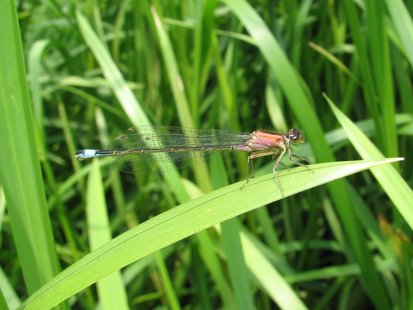
Scent of a Damselfly helps males choose a mate.
To date there is no evidence that damselflies use any sense other than vision (and tactile stimuli) in mate searching and sex recognition. However the results of research in Italy has shown that male damselflies of Ischnura elegans can distinguish between males & females using chemical clues. This is particularly significant where you find a number of colour forms as with this species and it is thought the antennae pick up the clues.
Frati F, Piersanti S, Conti E, Rebora M,Salerno G (2015) Scent of a Dragonfly: Sex Recognition in a Polymorphic Coenagrionid. PLoSONE 10(8): e0136697. doi:10.1371/journal.pone.0136697
To date there is no evidence that damselflies use any sense other than vision (and tactile stimuli) in mate searching and sex recognition. However the results of research in Italy has shown that male damselflies of Ischnura elegans can distinguish between males & females using chemical clues. This is particularly significant where you find a number of colour forms as with this species and it is thought the antennae pick up the clues.
Frati F, Piersanti S, Conti E, Rebora M,Salerno G (2015) Scent of a Dragonfly: Sex Recognition in a Polymorphic Coenagrionid. PLoSONE 10(8): e0136697. doi:10.1371/journal.pone.0136697
A Dragonfly is the world’s greatest traveller: The Globeskimmer (Pantala flavescens) has been known to be a long distance traveller for some time and for this reason has been chosen to be the logo of the World Dragonfly Association.
|
Recent genetic work has proved that the species that occurs on all continents except the Antarctic are so close that they have all derived from the same lineage. Most dragonflies and insects never move far from their own pond leading to differences over geological time. Madagascar which has been an island for over 30 million years shows how creatures develop in localised ways as over 90% of dragonfly species are endemic ( only found there). Pantala probably moves 3000 miles in one go around the Indian Ocean and It shows that it easily beats the Monarch Butterfly, the other great travelling insect Citation: Troast D, Suhling F, Jinguji H, Sahlén G, Ware J (2016) A Global Population Genetic Study of Pantala flavescens. PLoS ONE 11(3): e0148949. doi:10.1371/journal
|
How much does a Dragonfly eat: more work on the Globe Skimmer by a Japanese University has found that a typical Pantala eats about 14mg’s of food a day equating to about 185 midge like insects. If you think what the population of this worldwide species is then the amount of insects eaten each year is staggering and good reason to encourage dragonflies in mosquito areas (Odonatologica vol 44 No 3 2015)
_There is a new look website for the Worldwide Dragonfly Association click here This new site holds a lot more information about dragonflies around the world
Have you seen the book about the wildlife of the Malvern Hills and the associated common land, published by Pisces and follows the same format as the Wyre Forest Book. With one of the first ever records for the dragonfly database being in Malvern, dragonflies certainly feature in the book.
---------------------------------------------------------------------------------------------------------------------------------------------------------
First Sightings for each species each year
Your browser does not support viewing this document. Click here to download the document.
